- Efficient and smooth hybrid drivetrain
- Spacious new six-seat layout
- An excellent all-rounder
- No third row airbag coverage
- Short 10,000km service intervals add cost
- We hope to see cheaper hybrid models
It’s no secret that the world is turning towards electrification for its automotive fleet with more and more full-electric and part-electric cars popping up for sale every week. But electric cars are expensive to buy because they’re expensive to make, and hybrids offer a good compromise on both efficiency and price – they’ll cost more to run yes, but they cost significantly less to buy and will still lessen running costs massively. The latest hybrid to join the market is the 2023 Hyundai Santa Fe Hybrid, which promises Toyota-like running costs in Hyundai’s well-rounded large SUV. What’s it like? Let’s find out.
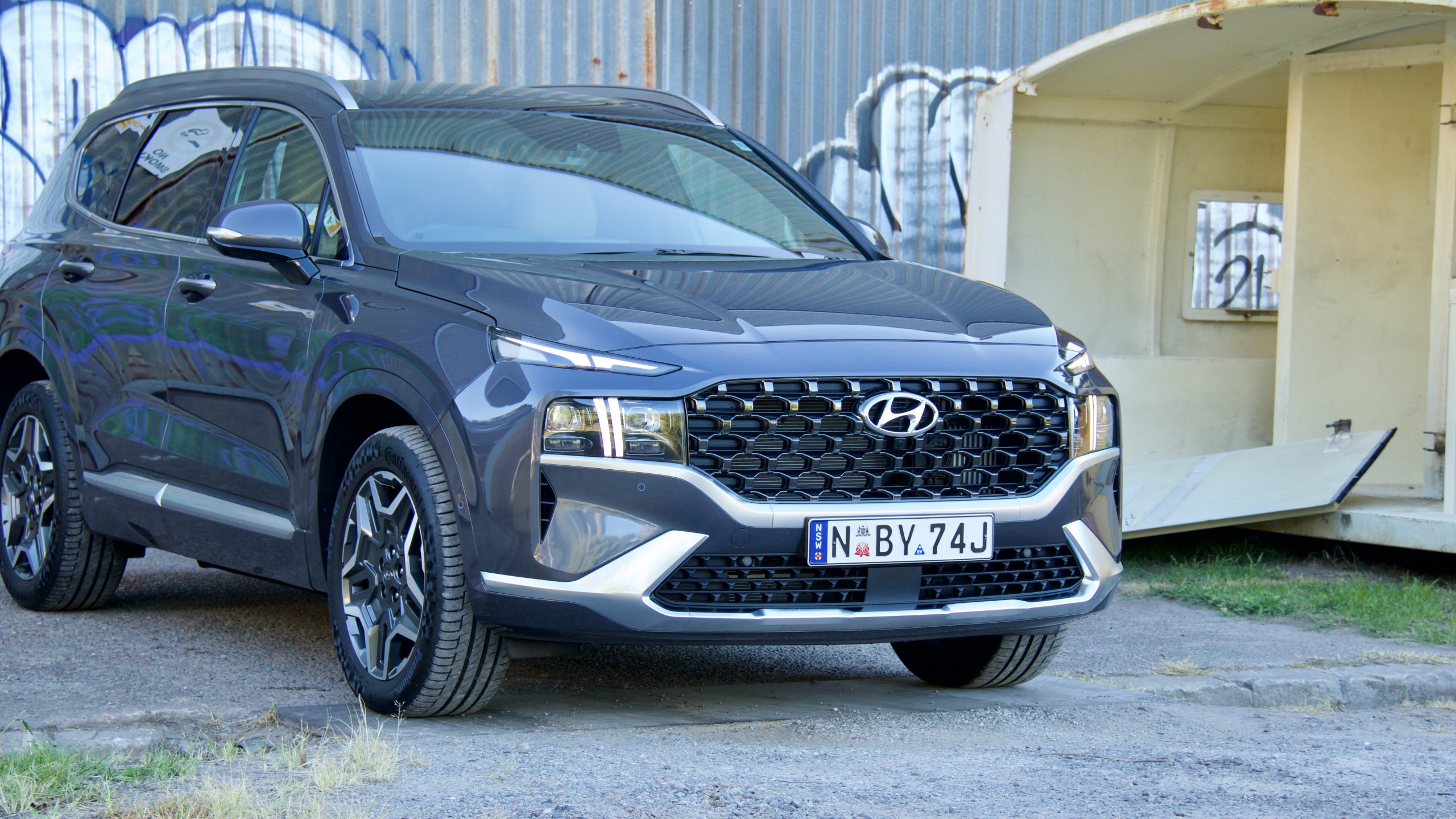
Hyundai is offering the Santa Fe hybrid in two models for the moment in Australia: the upper-spec Elite and the top-spec Highlander, which we tested here. Commanding a $3,000 premium over the diesel Santa Fe, the new hybrid drivetrain is shared with the Kia Sorento hybrid that launched locally last year. With Toyota’s hybrids selling up a storm, should you be considering a Hyundai hybrid too?
Price & Equipment: 8/10
While entry-level versions of the Hyundai Santa Fe range are available for under $51,000 drive away, we tested the absolute top-spec model: the six-seat Highlander hybrid, which is priced at $69,550 plus on-road costs (around $75,500 drive away, depending on location) – $3,000 more than the diesel. That’s not a small amount of money, but it is very well equipped.
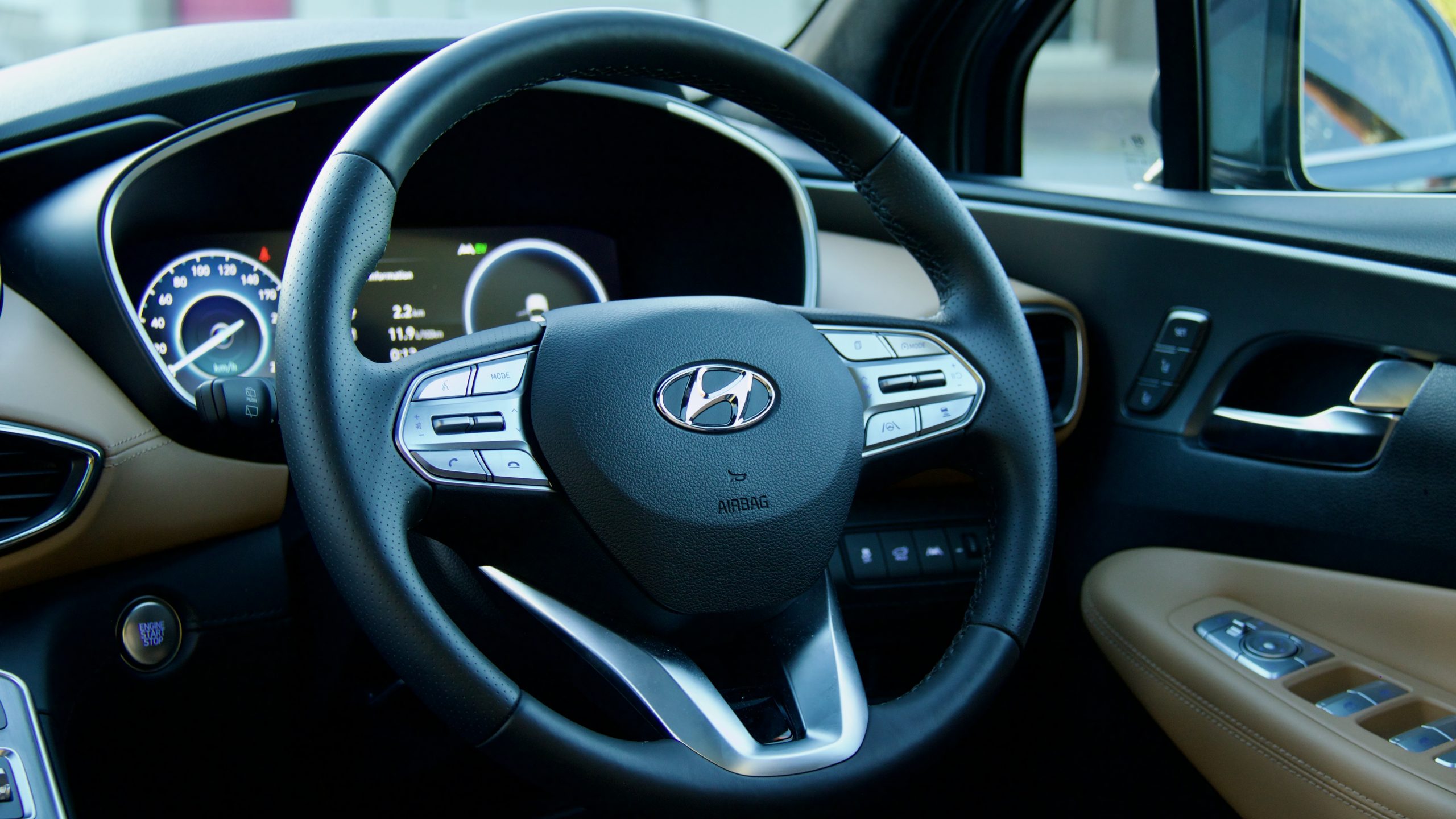
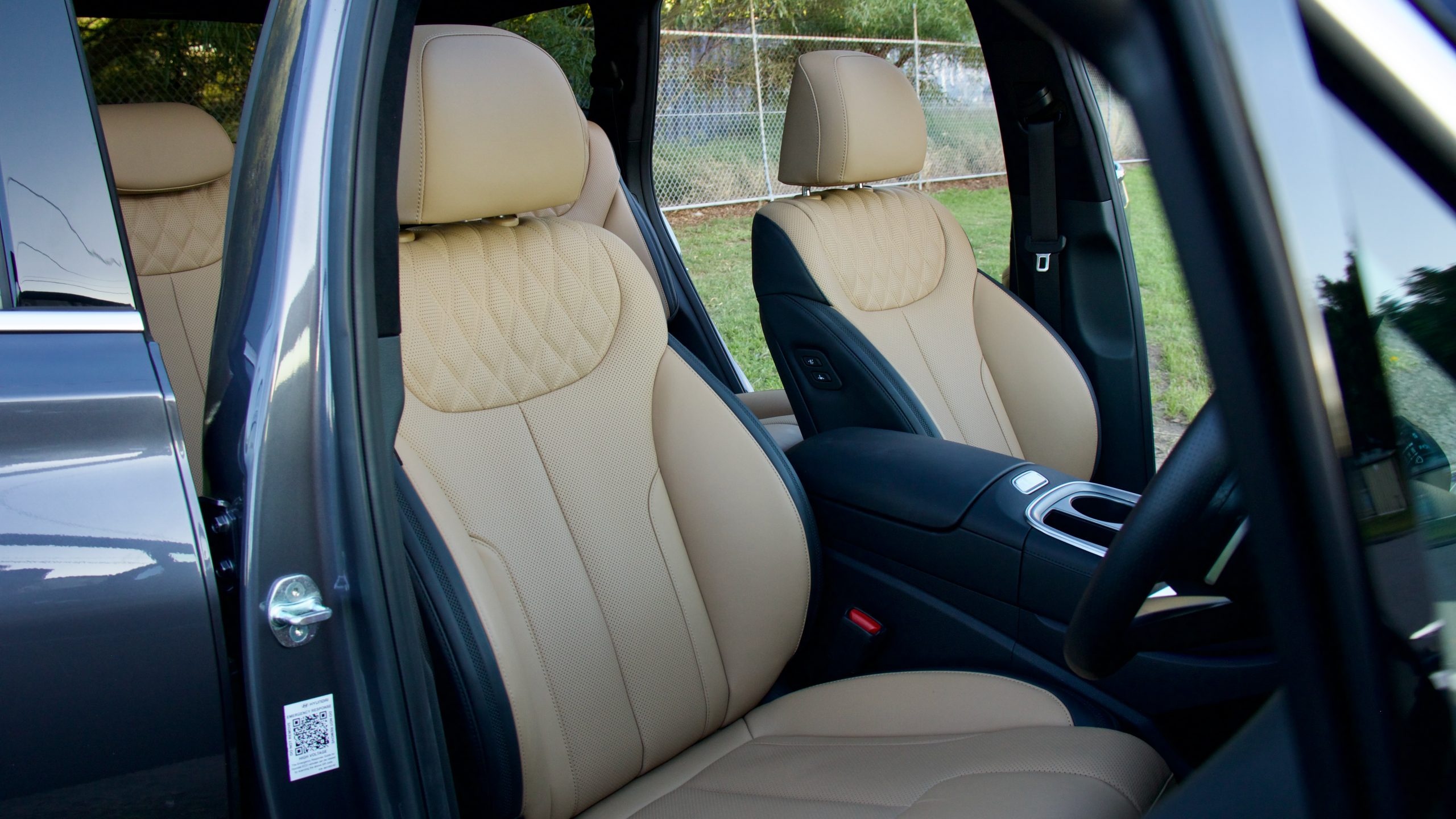
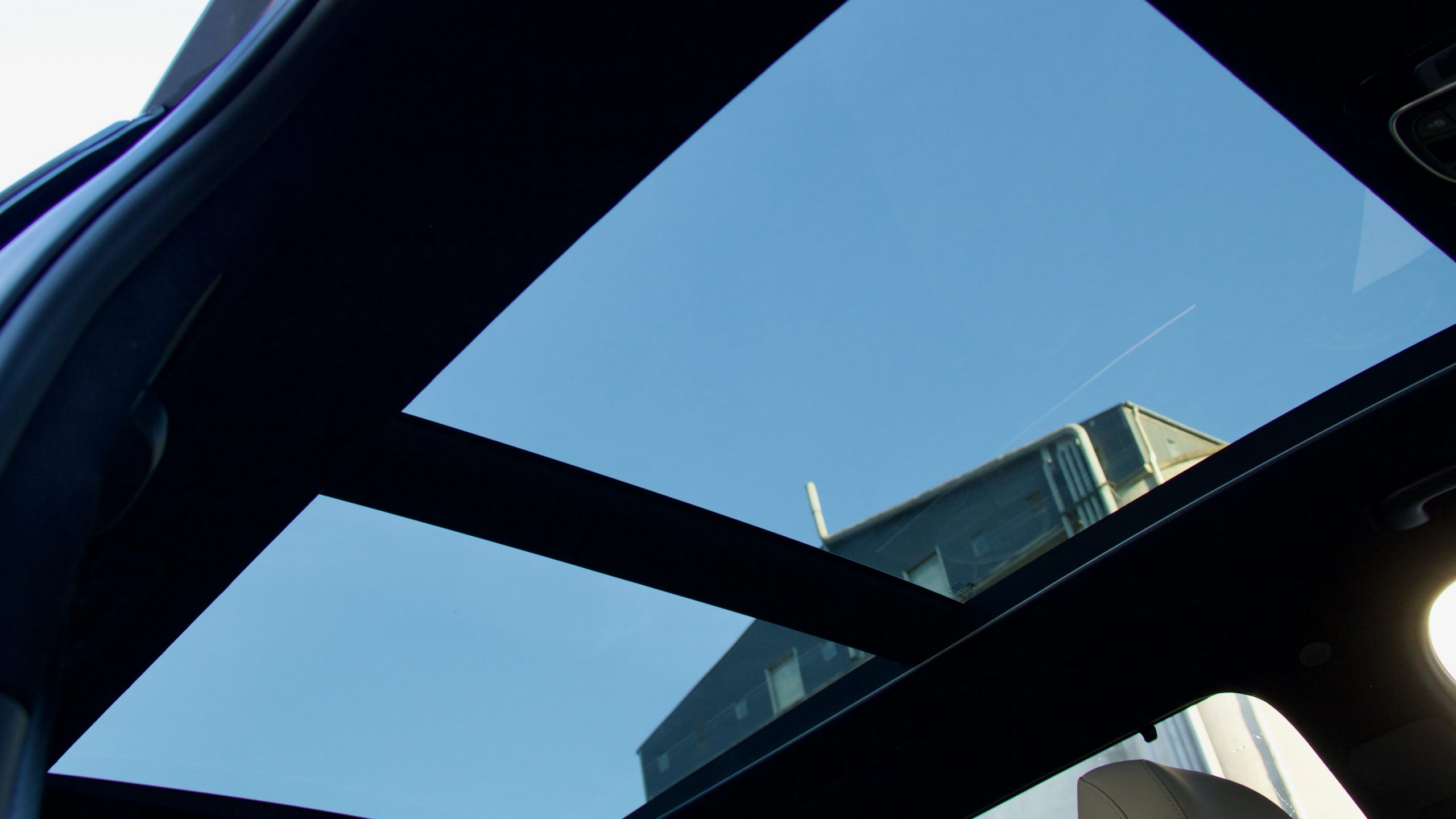
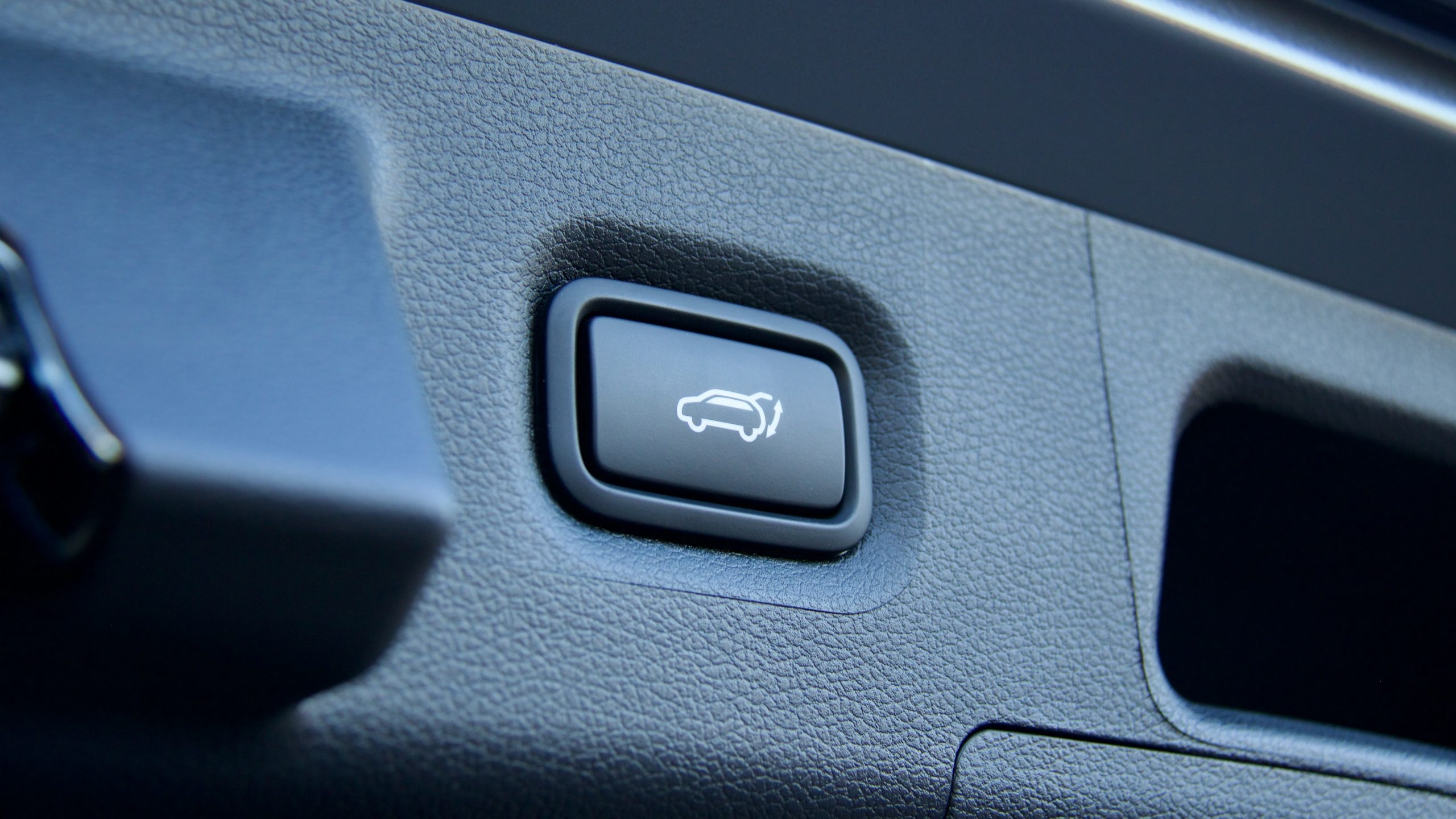
Standard equipment on the Highlander hybrid includes 19-inch alloy wheels, automatic all-LED lighting, automatic wipers, keyless entry and start with remote start and remote parking, a hands-free electric boot lid, heated and auto-folding mirrors that dip in reverse, a panoramic sunroof, Nappa leather upholstery, 14-way electrically adjustable front seats with driver’s memory, heated and cooled front seats, a heated steering wheel, heated middle row seats, dual-zone climate control with a third row fan speed controller, middle row sun shades, rear privacy glass, multi-colour LED interior ambient lighting, a 10.25-inch touchscreen with wired Apple CarPlay and android Auto, satellite navigation with live traffic, digital radio, a 10-speaker Harman Kardon sound system, three drive modes (eco, sport and smart), a heads-up display and a 12.3-inch digital driver’s display.
Safety equipment includes seven airbags (including a front centre unit though the curtain units don’t extend to the third row), auto emergency braking (AEB) with pedestrian, cyclist and intersection assist, lane keep assist with lane trace assist, auto high beam, adaptive cruise control with stop and go functionality, blind-spot monitoring with rear cross-traffic alert (both with braking), a blind-spot camera, rear auto braking, driver attention monitoring, speed sign recognition, rear occupant alert, safe exit assist, front and rear parking sensors and a 360-degree camera.
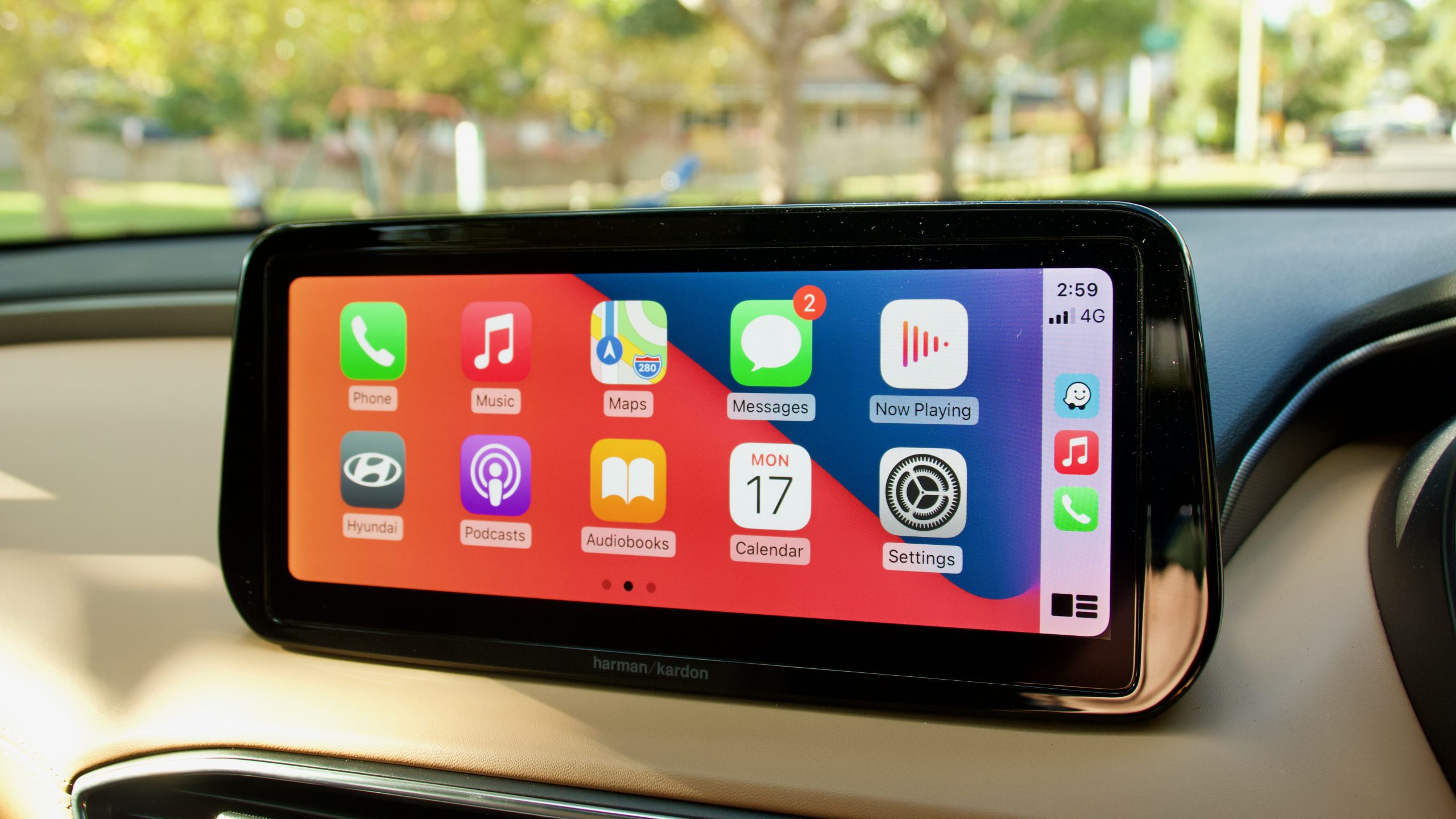
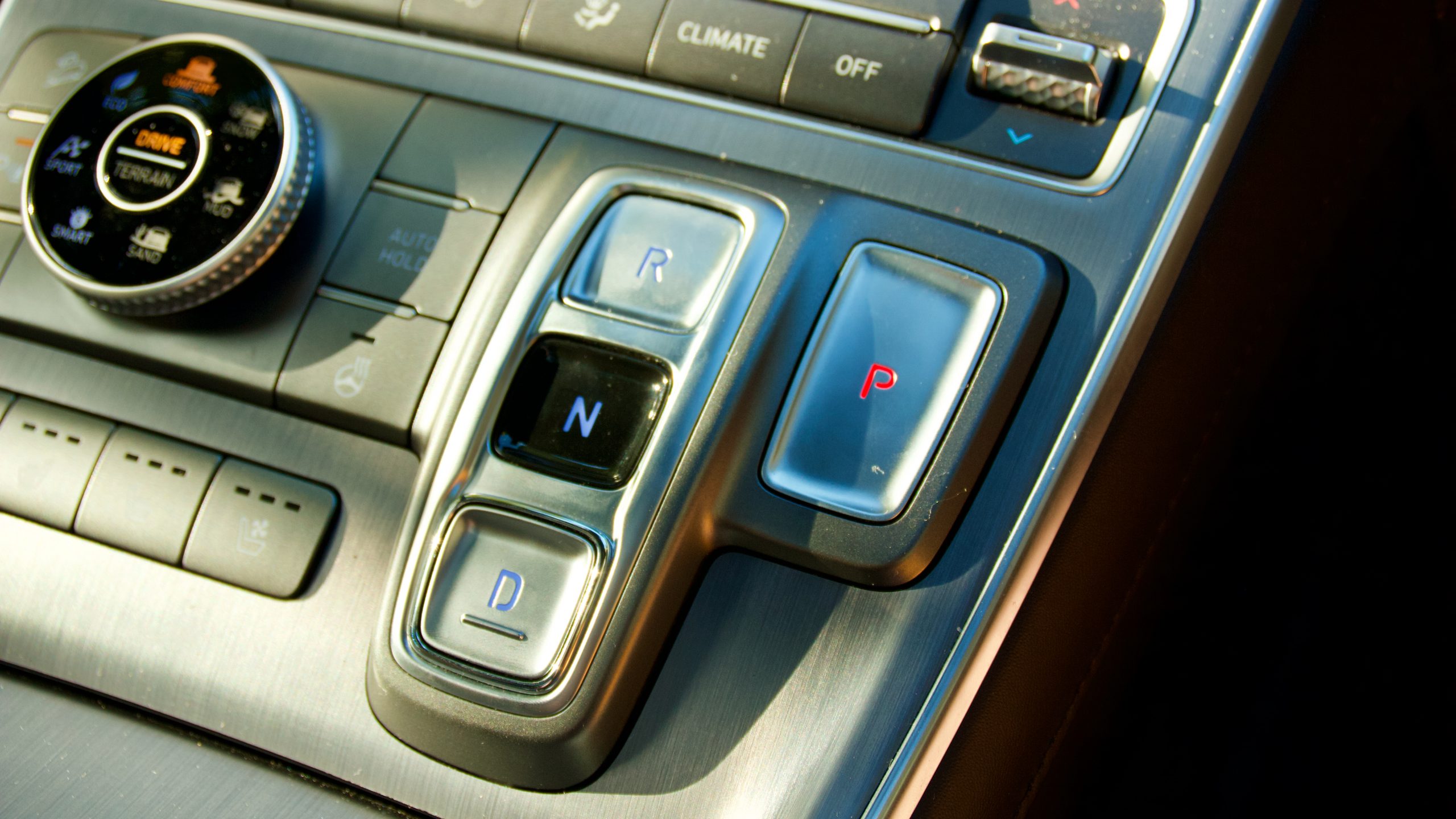
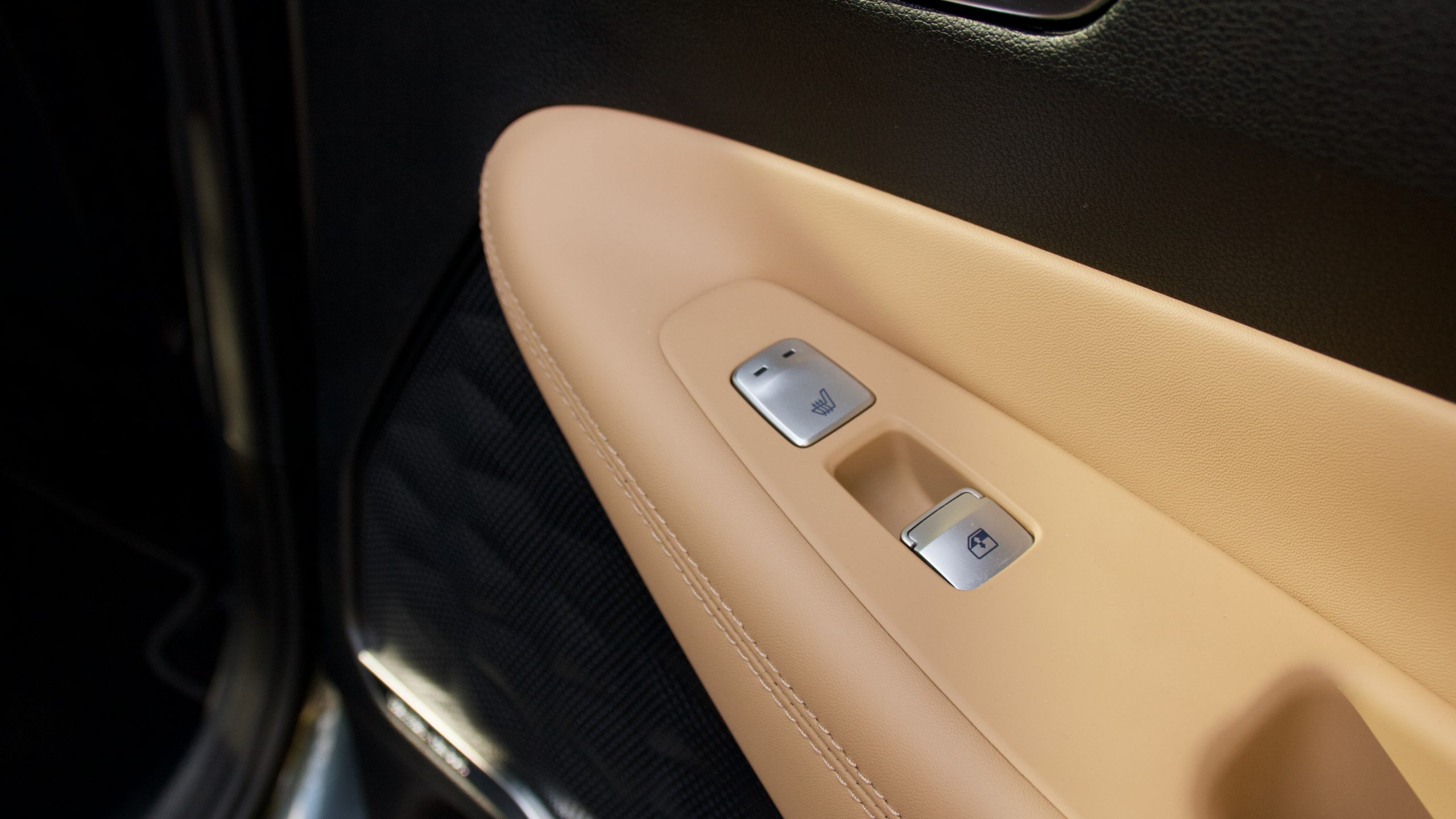
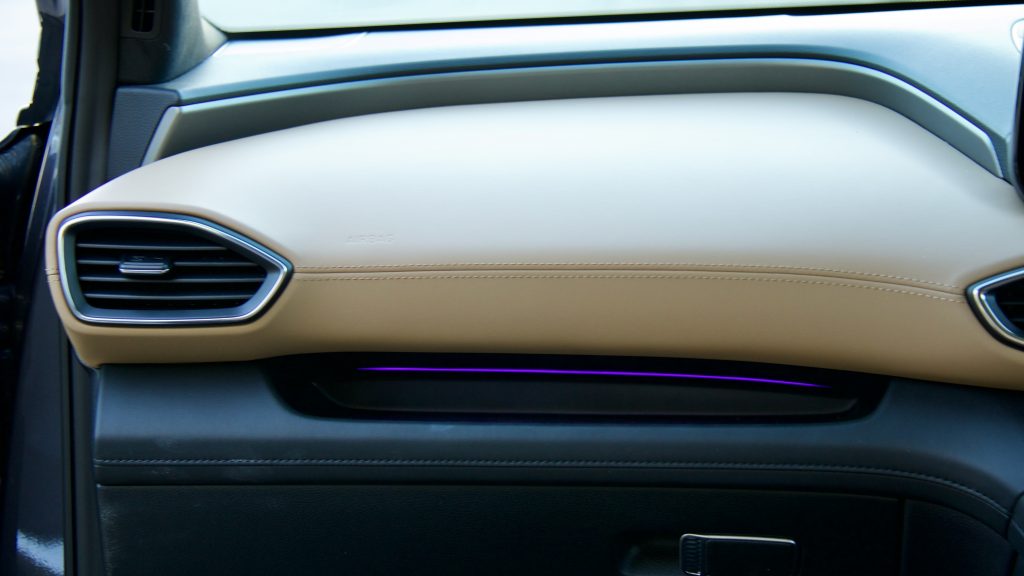
Colour options for the Santa Fe Highlander hybrid are surprisingly limited with ‘Glacier White’ the only no-cost option and ‘Abyss Black’, ‘Typhoon Silver’ and our test car’s ‘Magnetic Force’ adding $695 to the price. Black is the standard interior colour, with our test car’s lovely tan colour a $295 option. Our test car’s six-seat layout is an option – the standard seven-seat layout costs the same.
We consider the Kia Sorento GT-Line Hybrid AWD – which shares the Santa Fe’s mechanicals – and Toyota Kluger Grande Hybrid to be the biggest rivals for the Santa Fe Highlander hybrid. The Santa Fe and Sorento are quite evenly equipped with the Sorento costing $200 more – it has a Bose sound system versus the Hyundai’s Harman Kardon unit, but they’re otherwise evenly equipped.
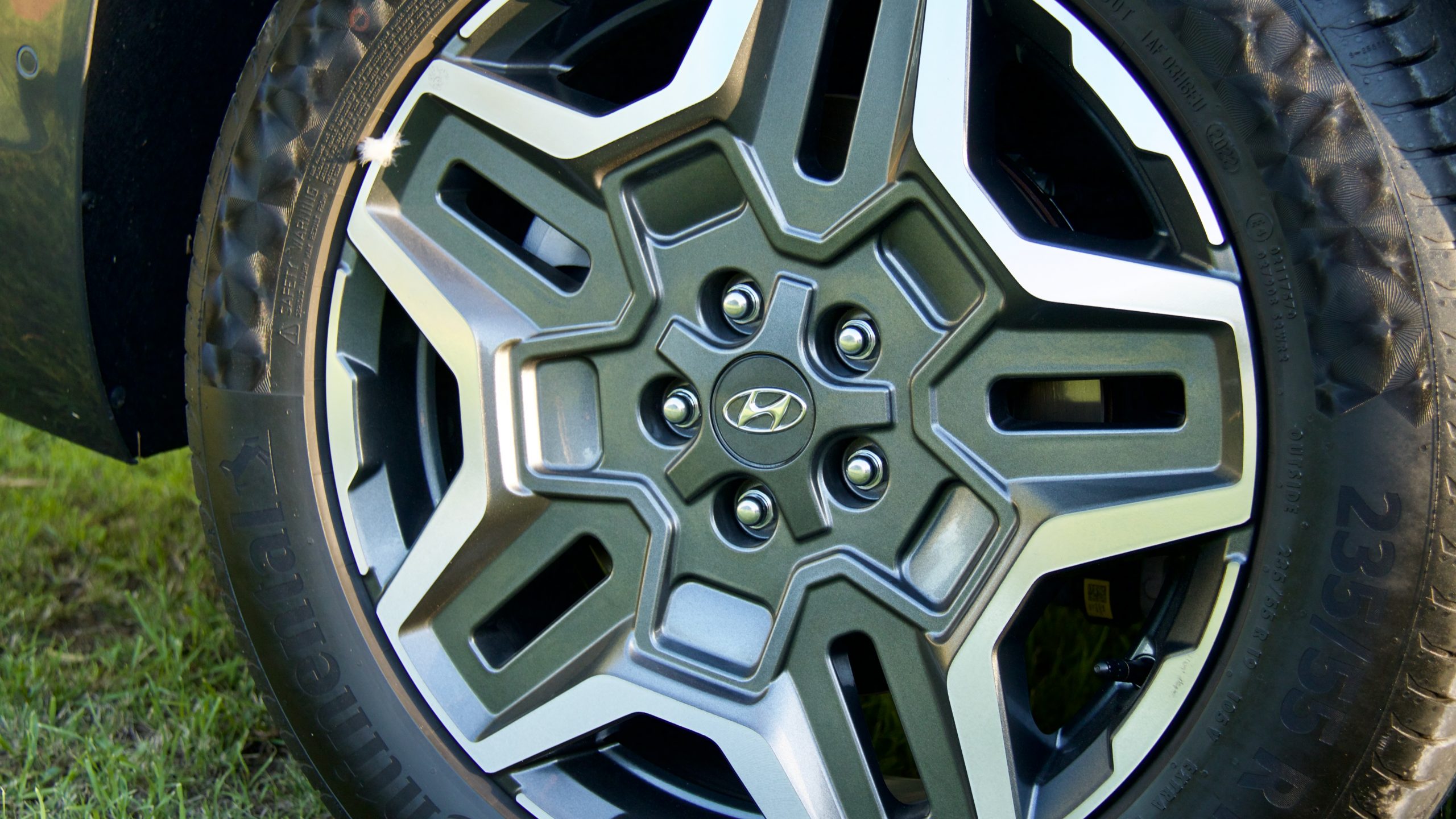
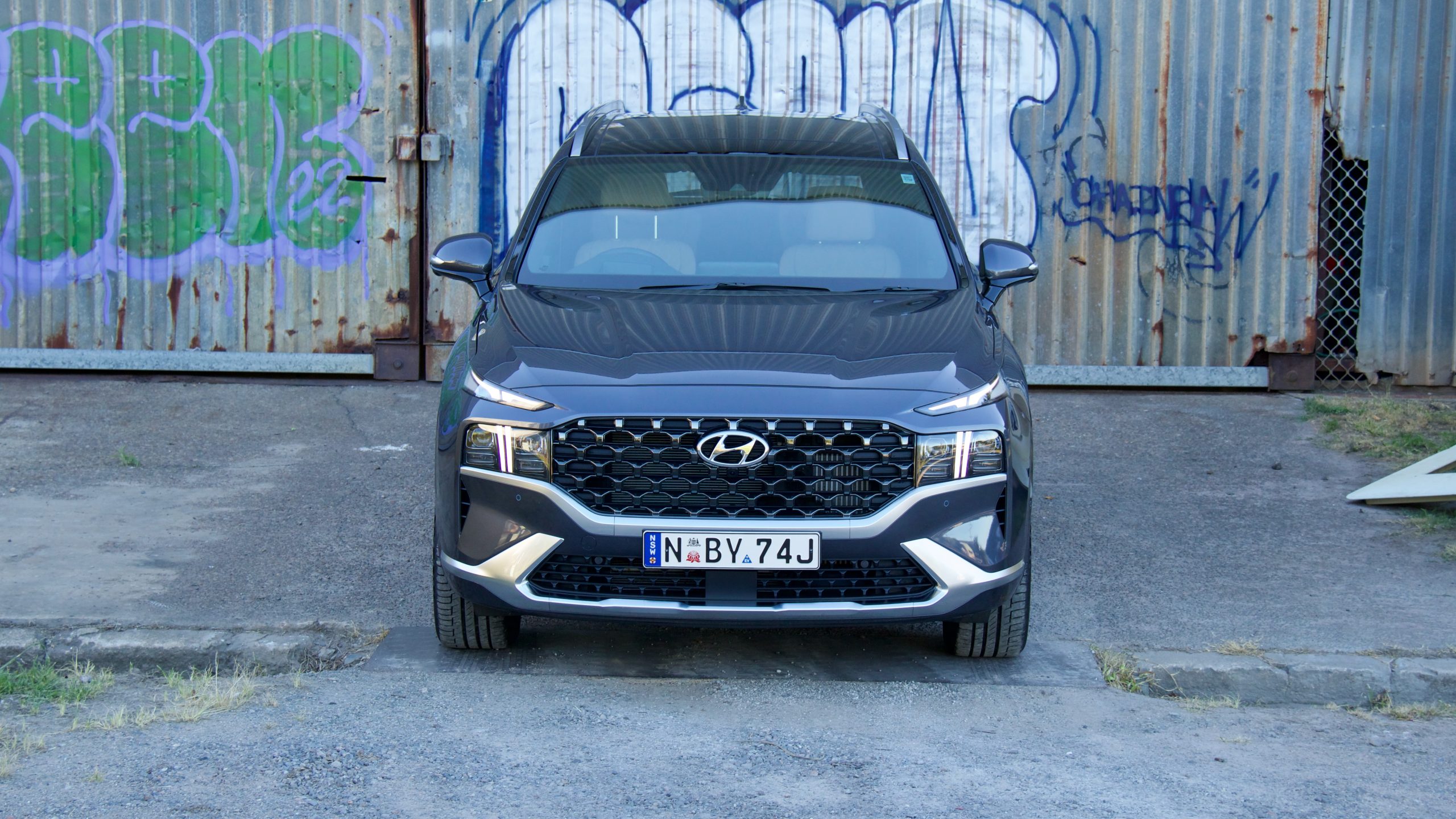
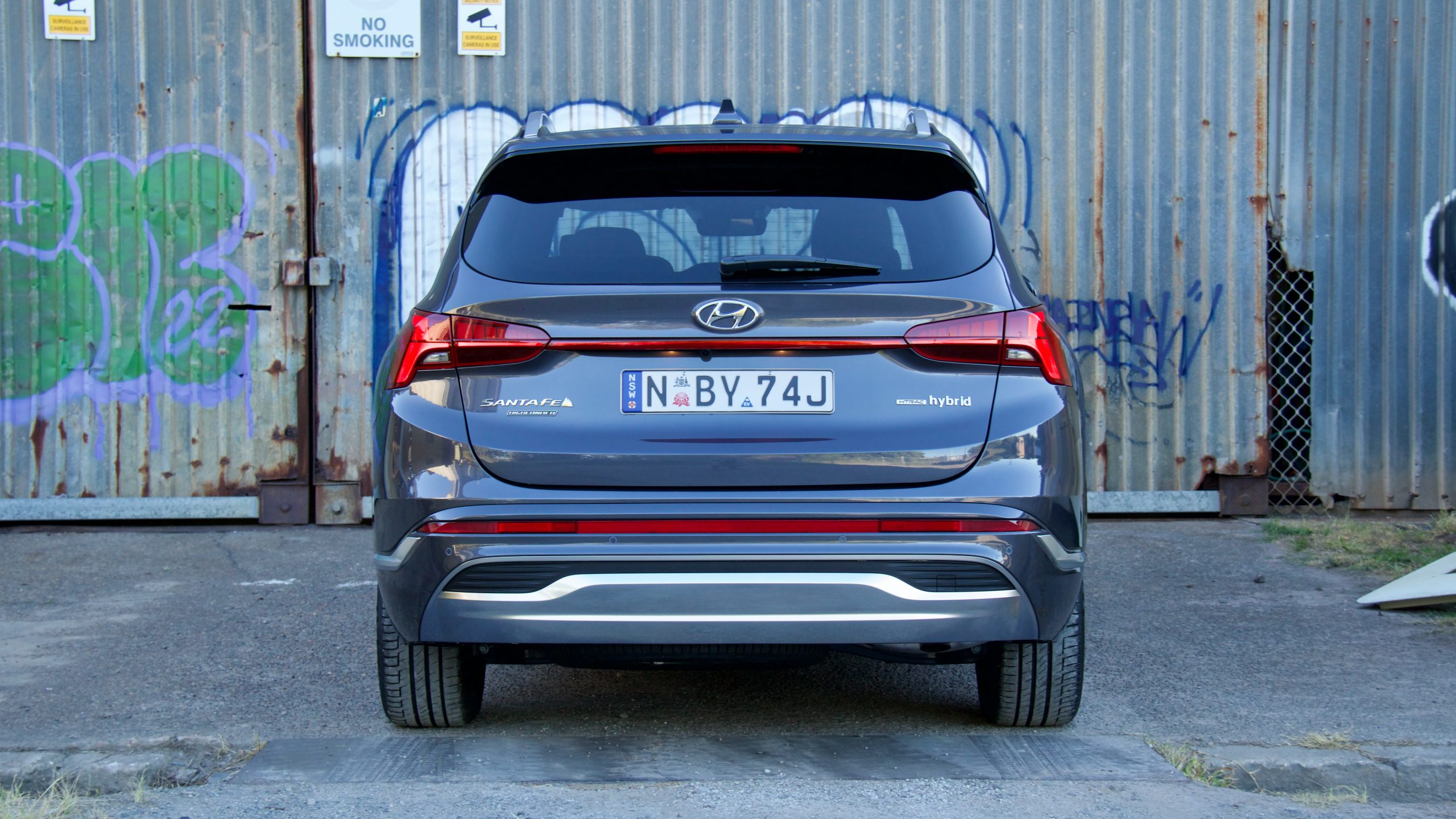
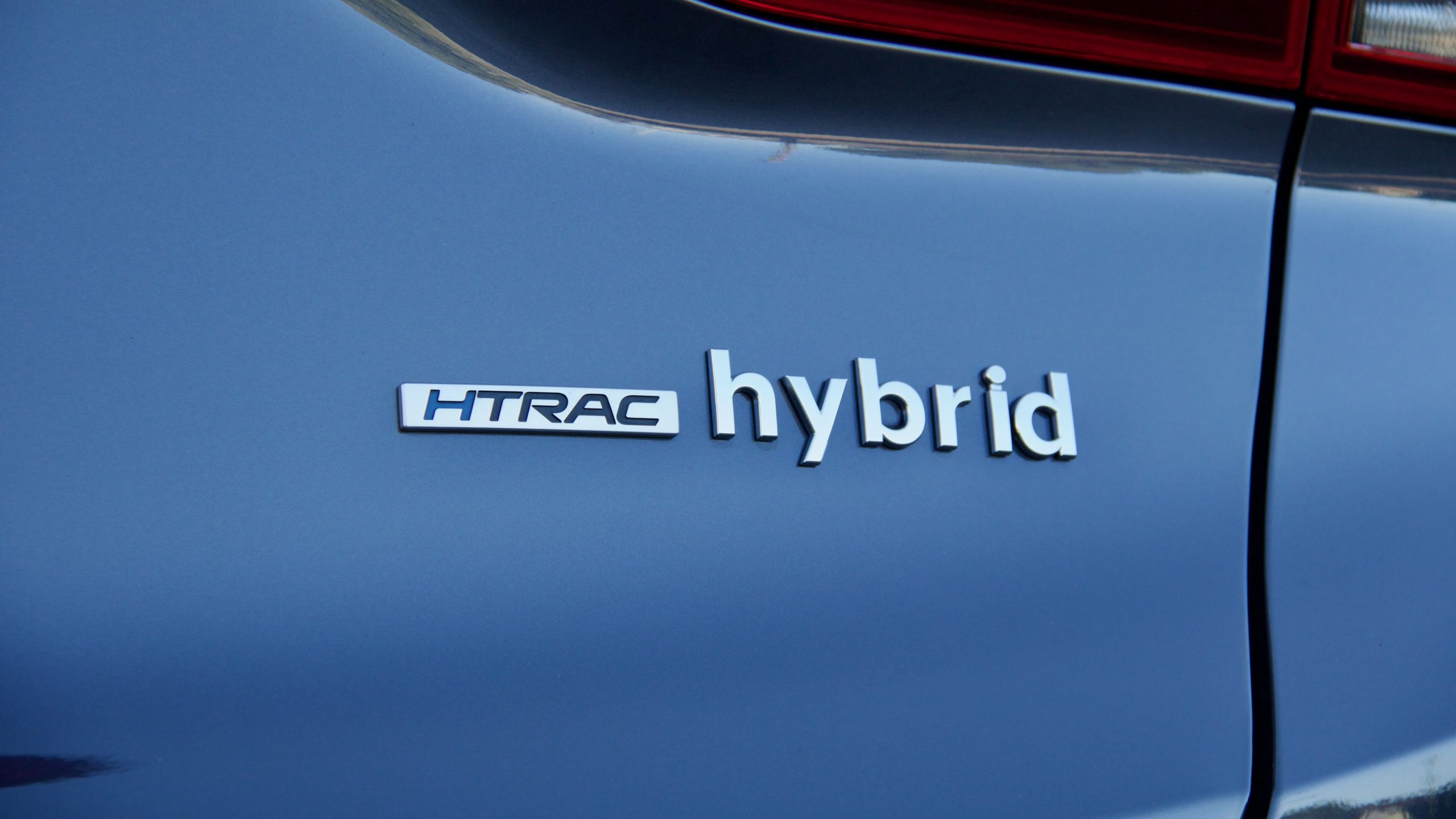
The Kluger Grande hybrid features larger 20-inch wheels, tri-zone climate control and third row airbag coverage over the Santa Fe Highlander, but the Santa Fe has Nappa leather upholstery, remote start, remote parking functionality, safe exit assist and an optional six-seat layout over the Kluger. The Santa Fe Highlander is also almost $9,000 cheaper than the Kluger, making it better value for money.
Performance & Economy: 9/10
Under the bonnet of the 2023 Hyundai Santa Fe Highlander Hybrid is a 132kW/265Nm 1.6-litre turbocharged four-cylinder petrol engine that’s mated to a 44kW/264Nm electric motor that draws power from a 1.49kWh lithium ion battery. The total system output is 169kW of power (at 5,500rpm) and 350Nm of torque (between just 1,000rpm and 4,500rpm) and the grunt is put to all four wheels via a six-speed torque converter automatic transmission.
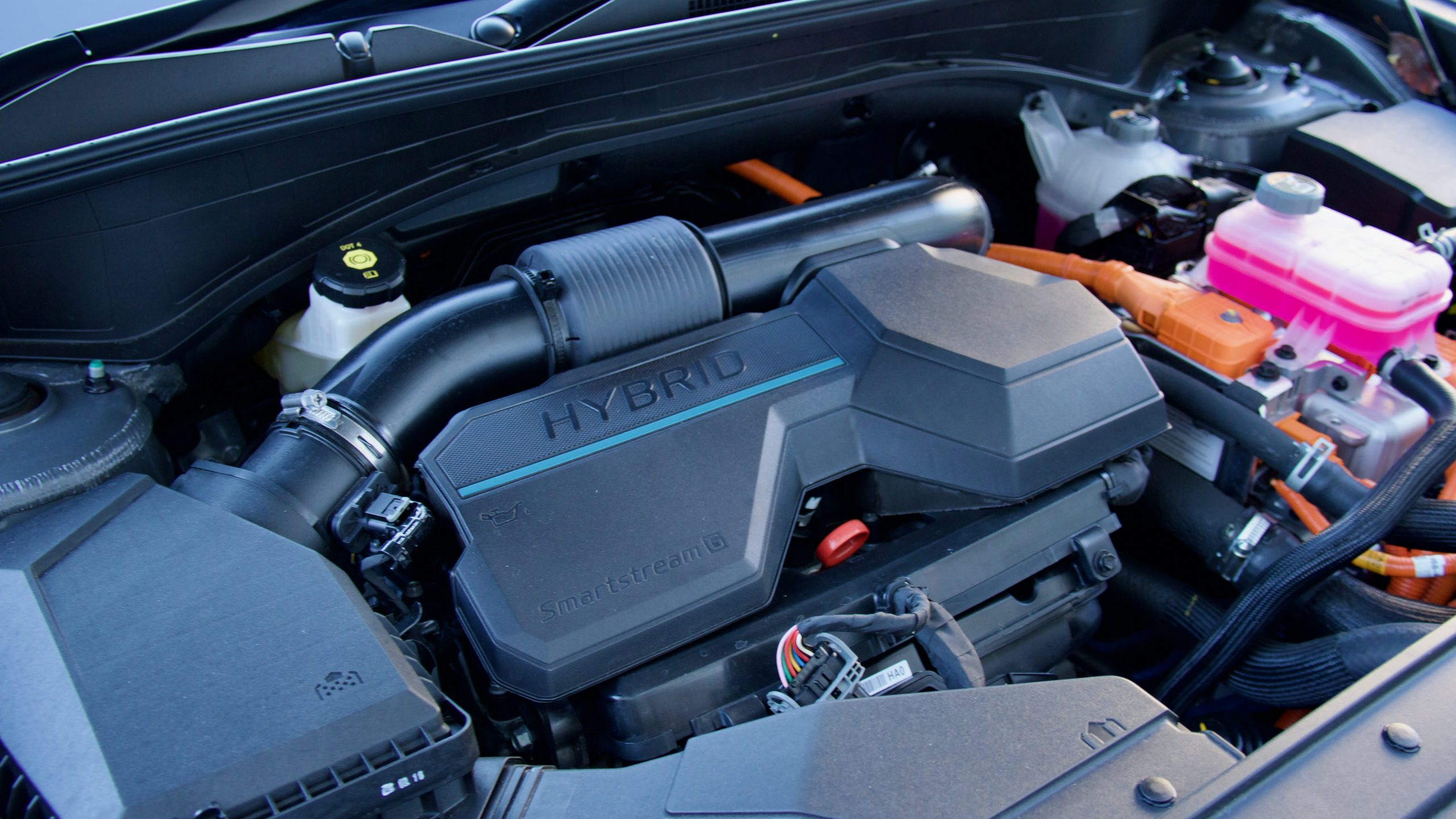
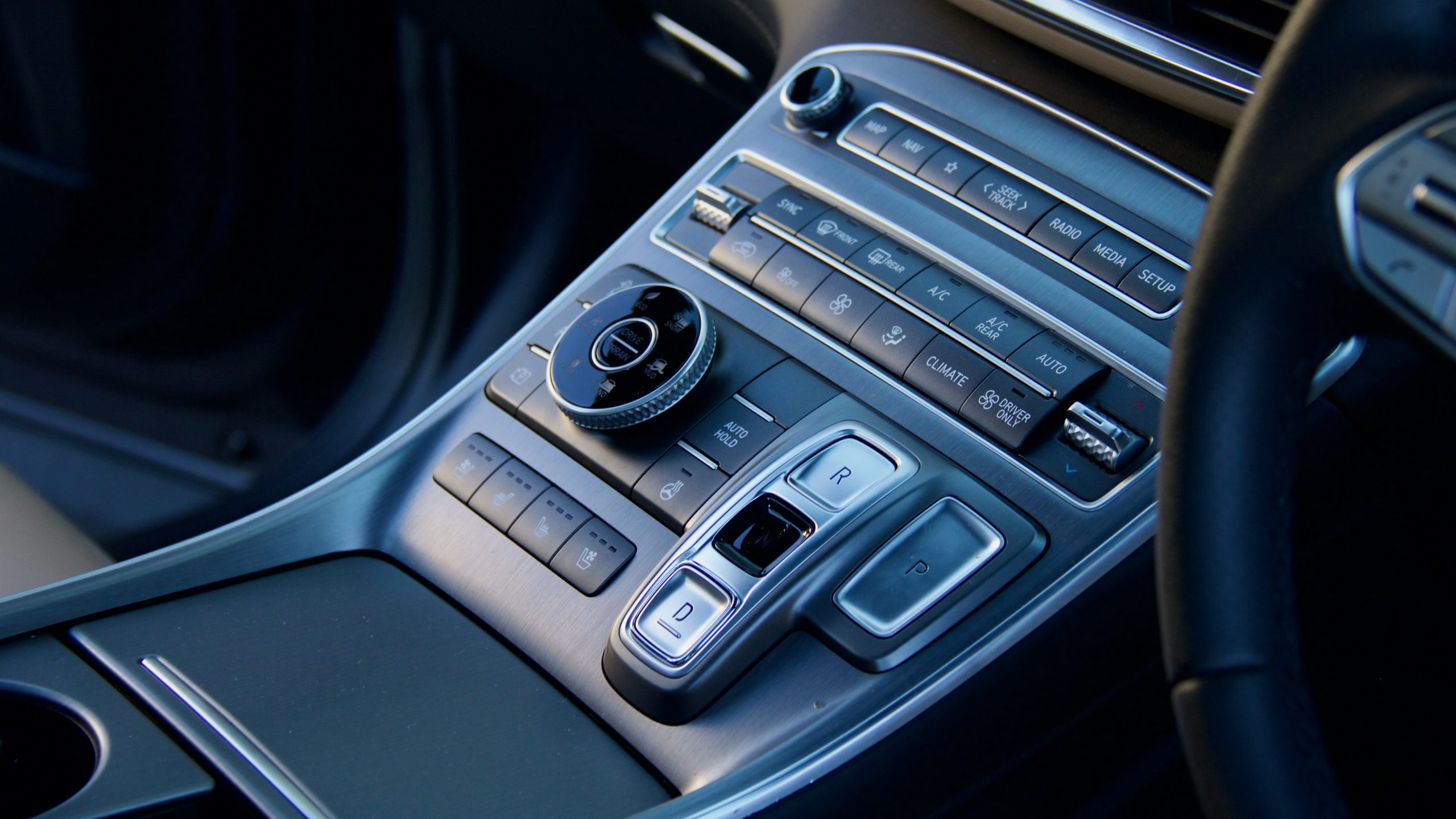
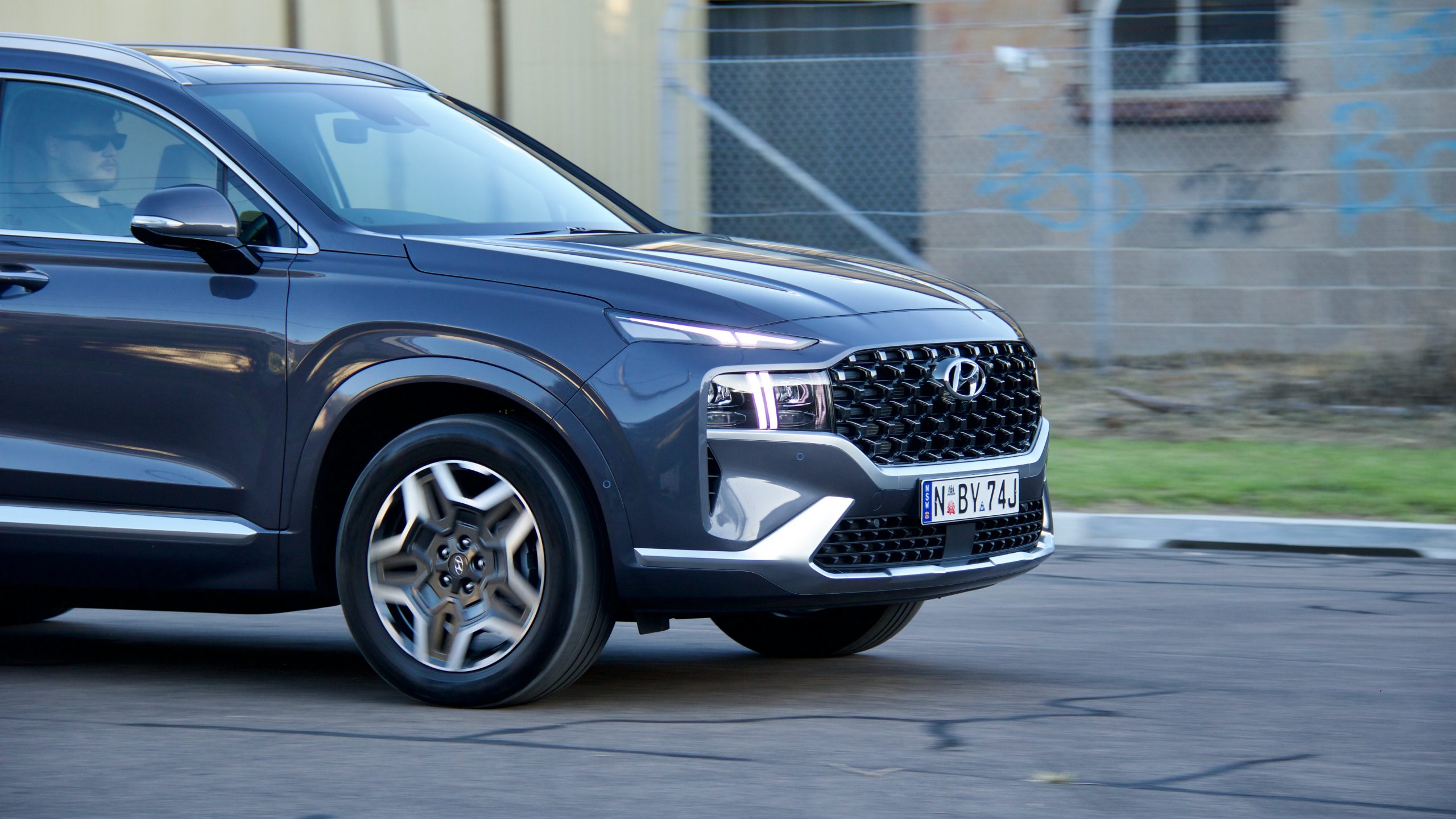
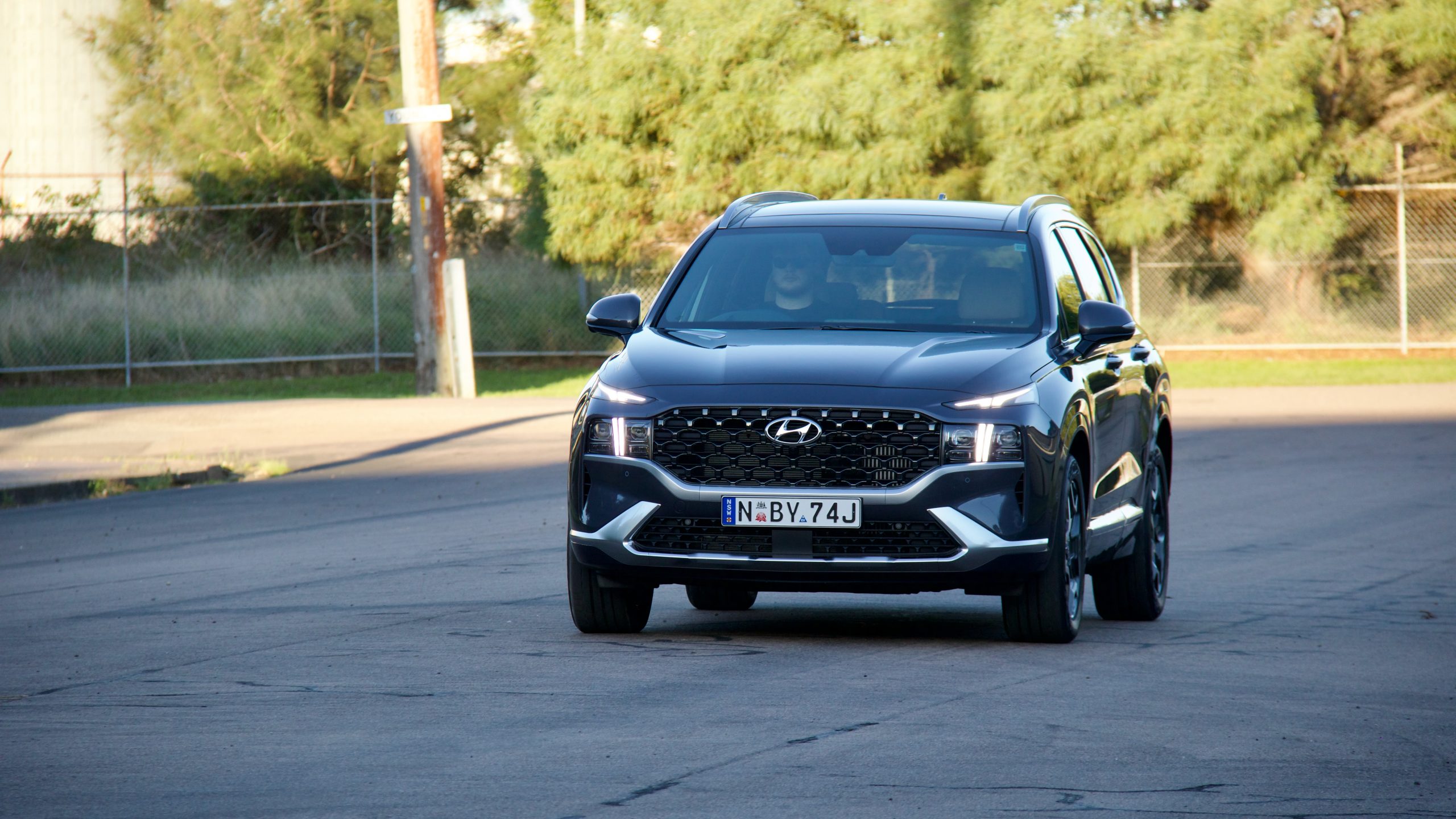
On a combined cycle, the Santa Fe Highlander Hybrid is rated at 6.0L/100km, making it the thriftiest Santa Fe by a whole 0.1L/100km – the diesel is rated at 6.1L/100km, but diesel and hybrid cars achieve their best economy in different conditions. The diesel Santa Fe will comfortably beat that number in highway driving, whereas our highway best was 6.2L/100km in the hybrid, but in town driving, the diesel’s economy will hover around 10L/100km and we achieved 6.7L/100km. Overall, we achieved 6.5L/100km, which isn’t far off the car’s claim and pretty remarkable for such a large vehicle.
It’s difficult to review a modern hybrid without comparing to a Toyota hybrid system because the big T has been in the game far longer than anybody else. Against the Kluger hybrid, it’s obvious that Hyundai has done a good job with its first Santa Fe hybrid. It’s not quite as efficient as the Kluger hybrid because it seems to keep the engine turned on for longer – we’ve achieved under 6.0L/100km in our testing of the Kluger – but thanks to the six-speed automatic (not a CVT as in a Toyota), it feels more like a regular petrol engine. It’s also capable of higher-speed driving in electric mode than the Kluger if there’s enough juice in the battery – we cruised for a few kilometres at highway speed, for example.
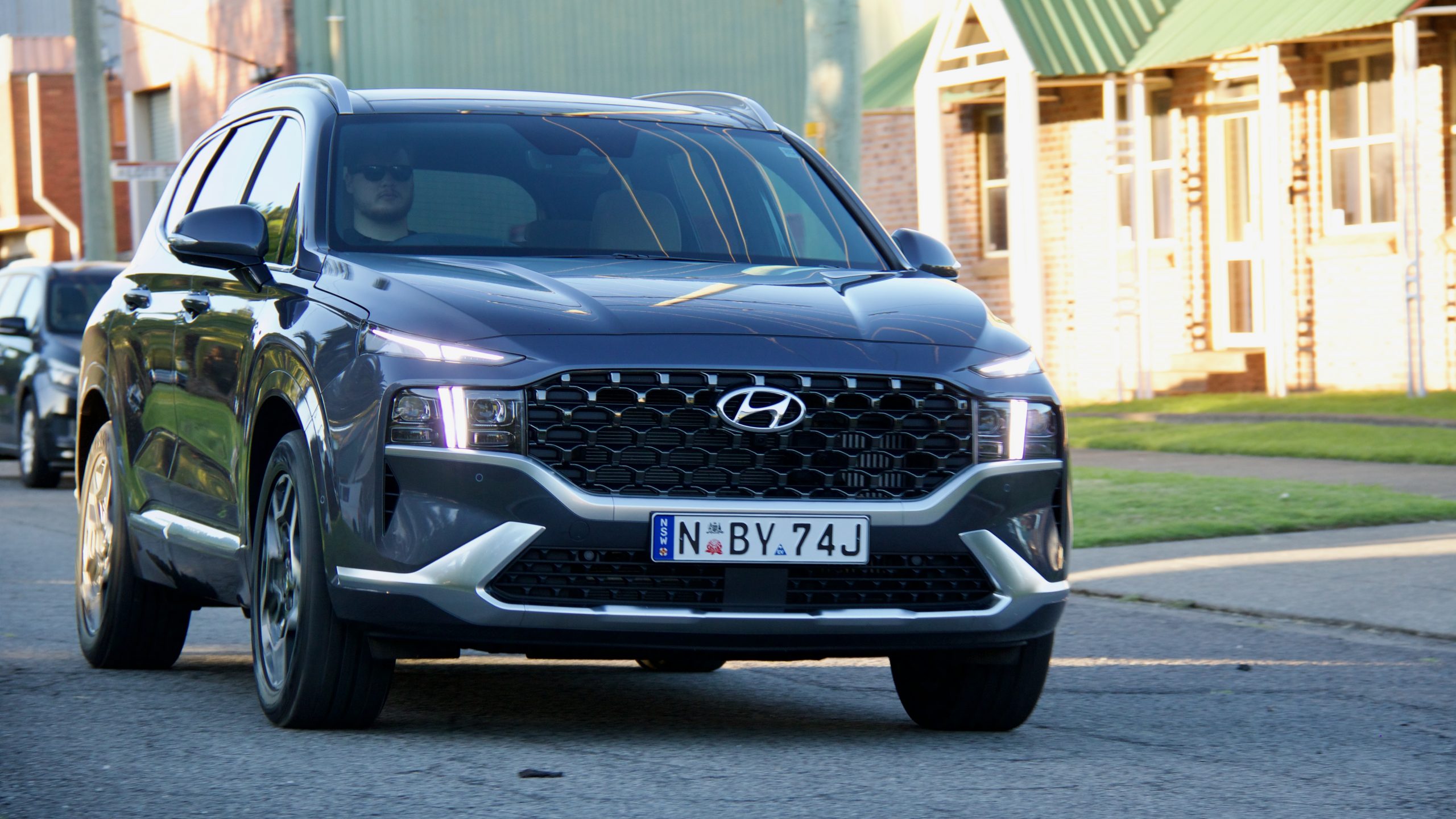
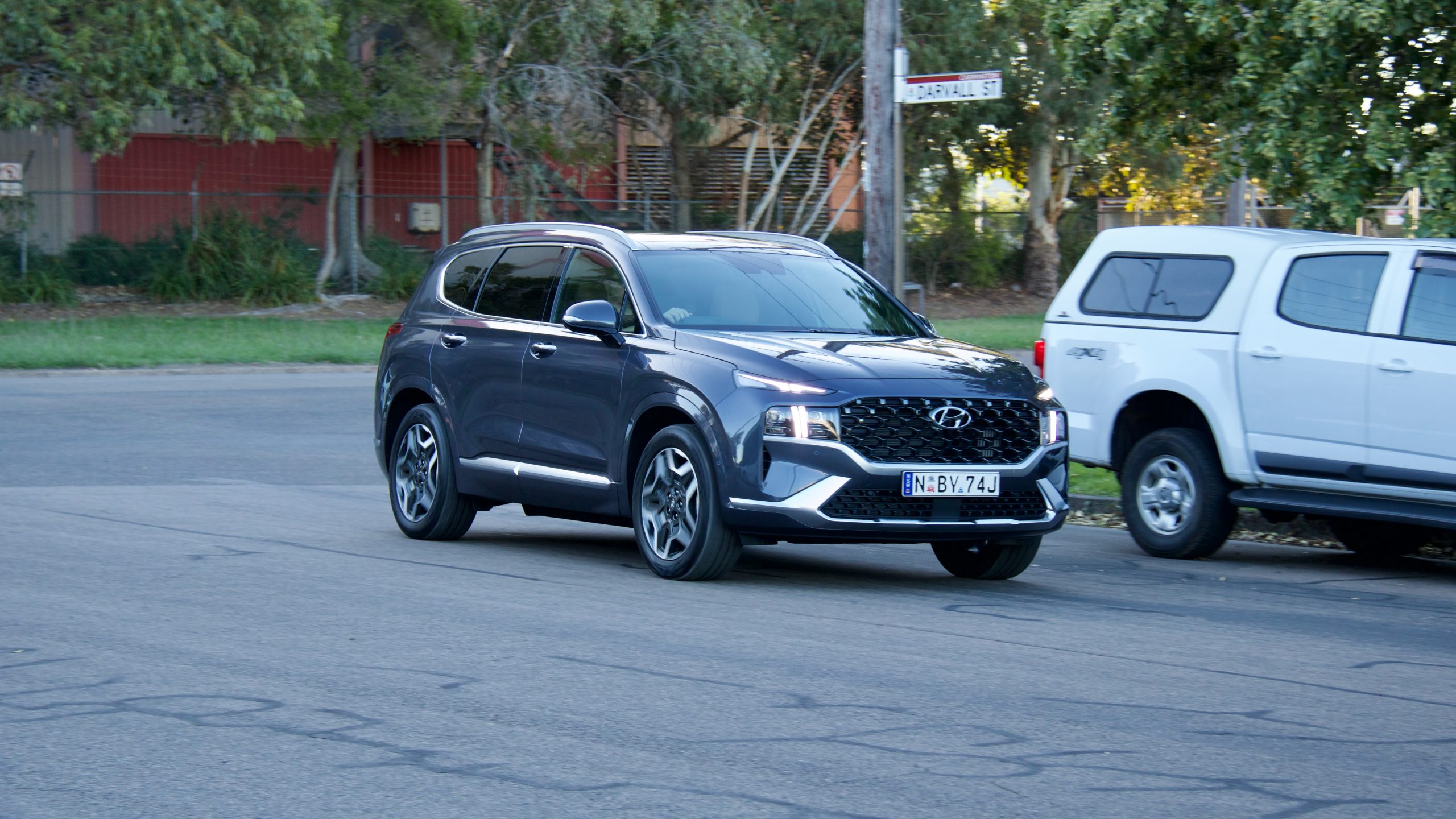
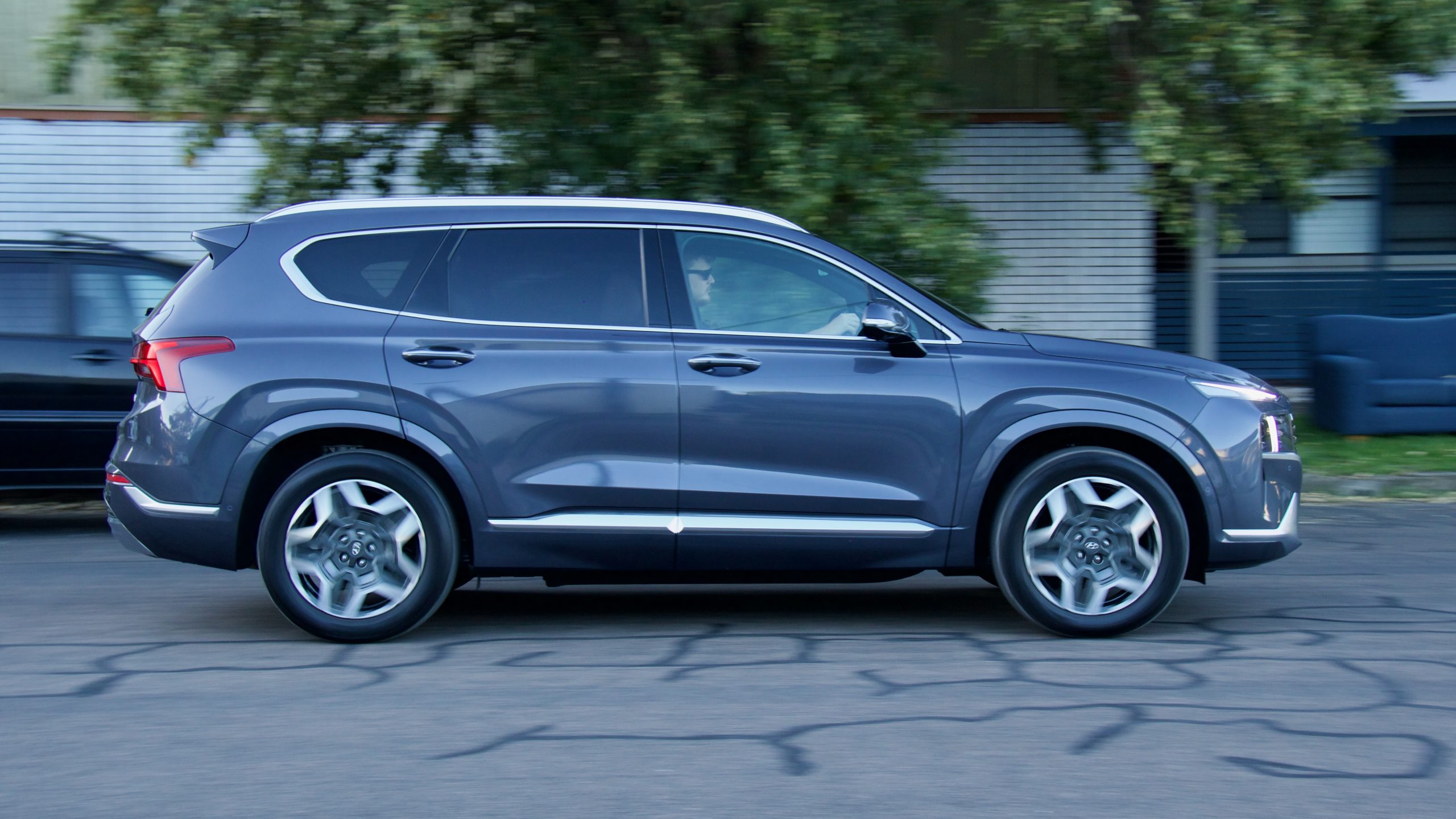
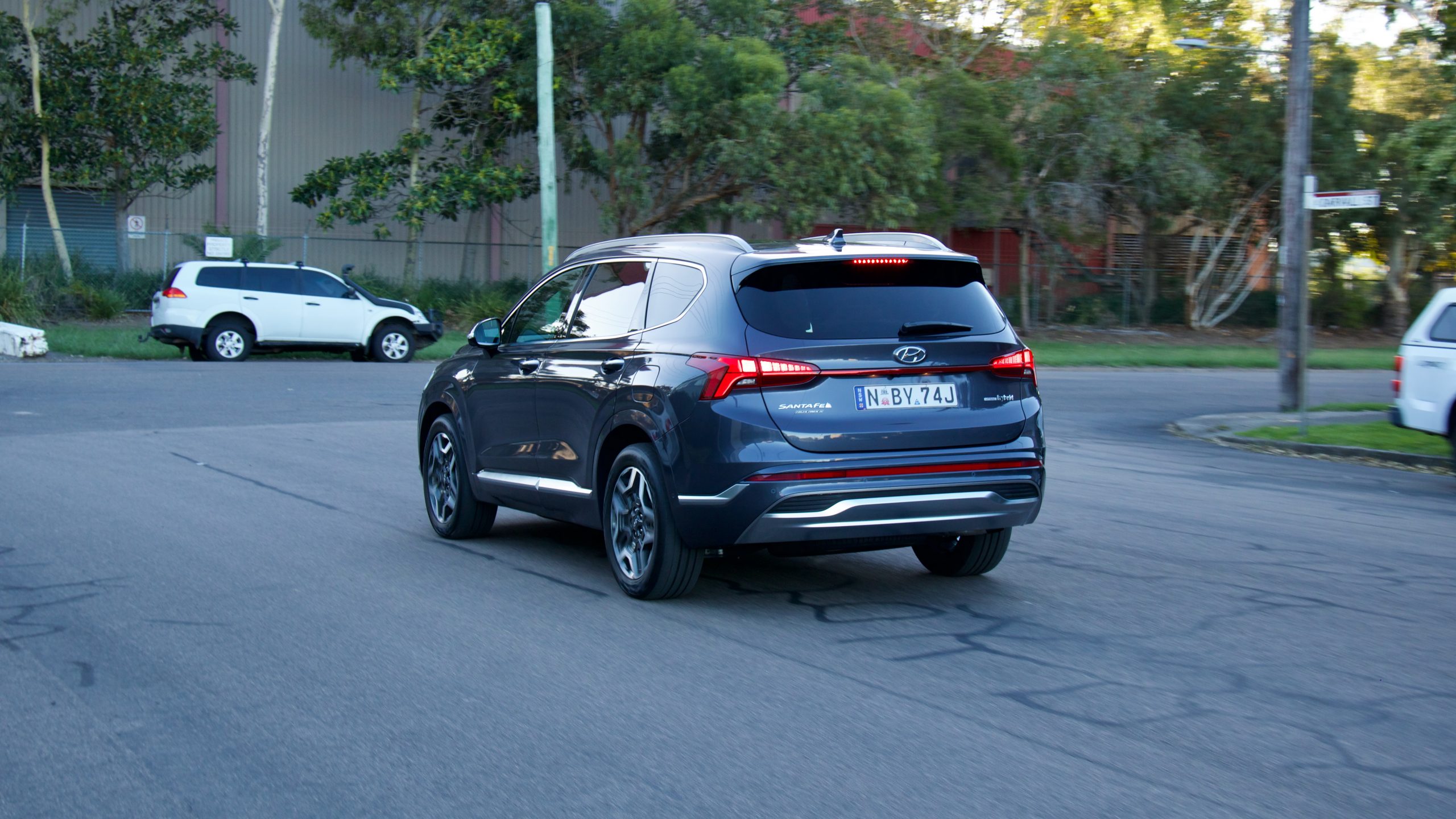
Like the Kluger hybrid, the Santa Fe hybrid’s acceleration capability is not earth-shatteringly fast – Hyundai doesn’t claim a 0-100km/h time but we guess it to be around the eight second mark – but around town, it’s got more than enough pep. Peak torque hits at just 1,000rpm and stays until 4,500rpm, which gives urban driving the full 350Nm of available torque. It’s also quite a smooth hybrid system, with only a slight vibration and the engine noise starting giving a clue as to the transition between the two happening.
Ride & Handling: 9/10
Like the regular Santa Fe, the hybrid model offers up a largely excellent driving experience. Thanks to Hyundai’s local tuning program, its ride quality is excellent – it’s a touch firm, but offers great body control. The hybrid feels a touch firmer than the diesel, but you’d be hard pressed to notice much of a difference unless driving them back-to-back. The steering doesn’t offer too much feel, but it’s nicely weighted, and we think it offers a nicer ride and handling balance than the Sorento and Kluger.
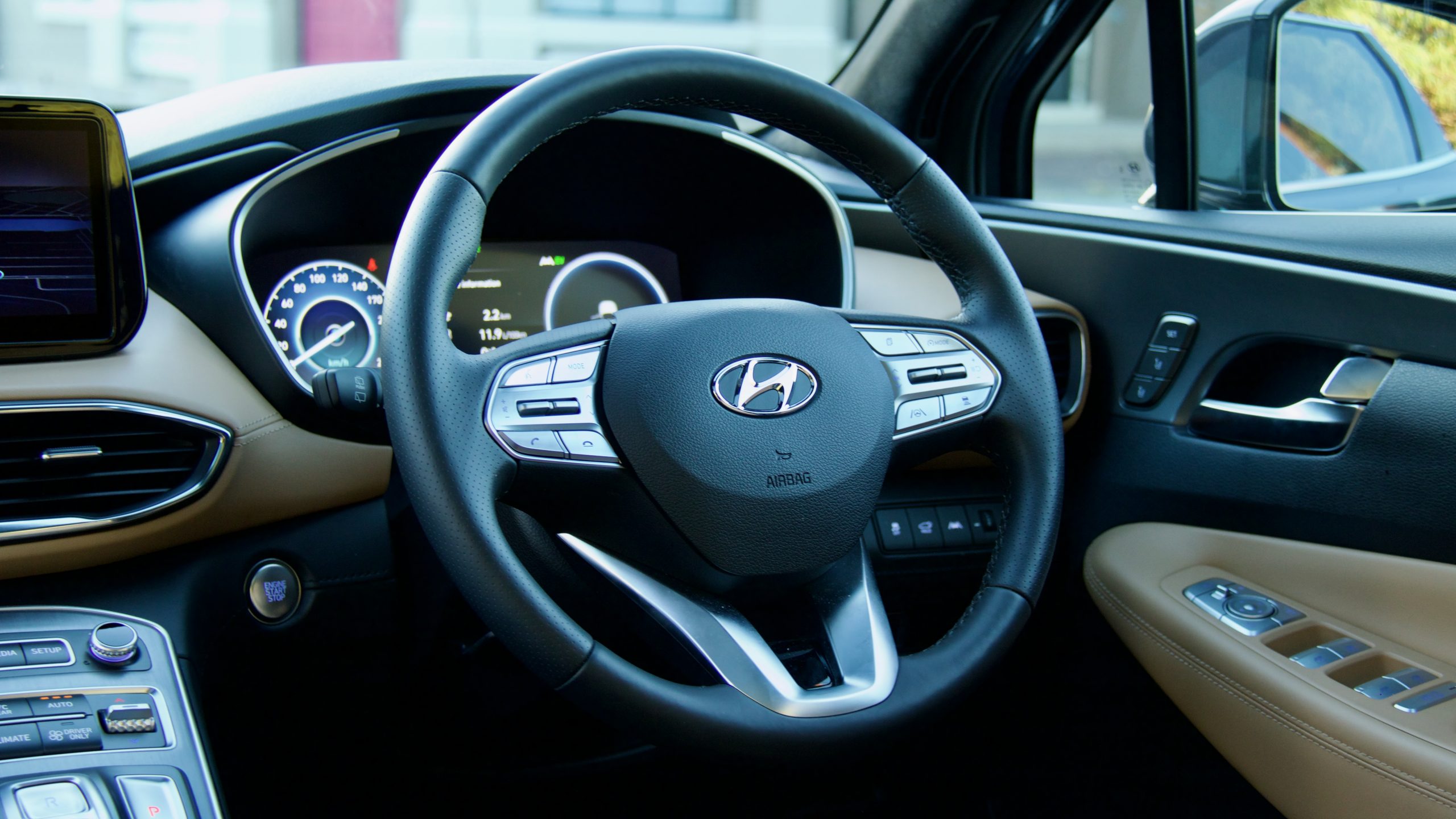
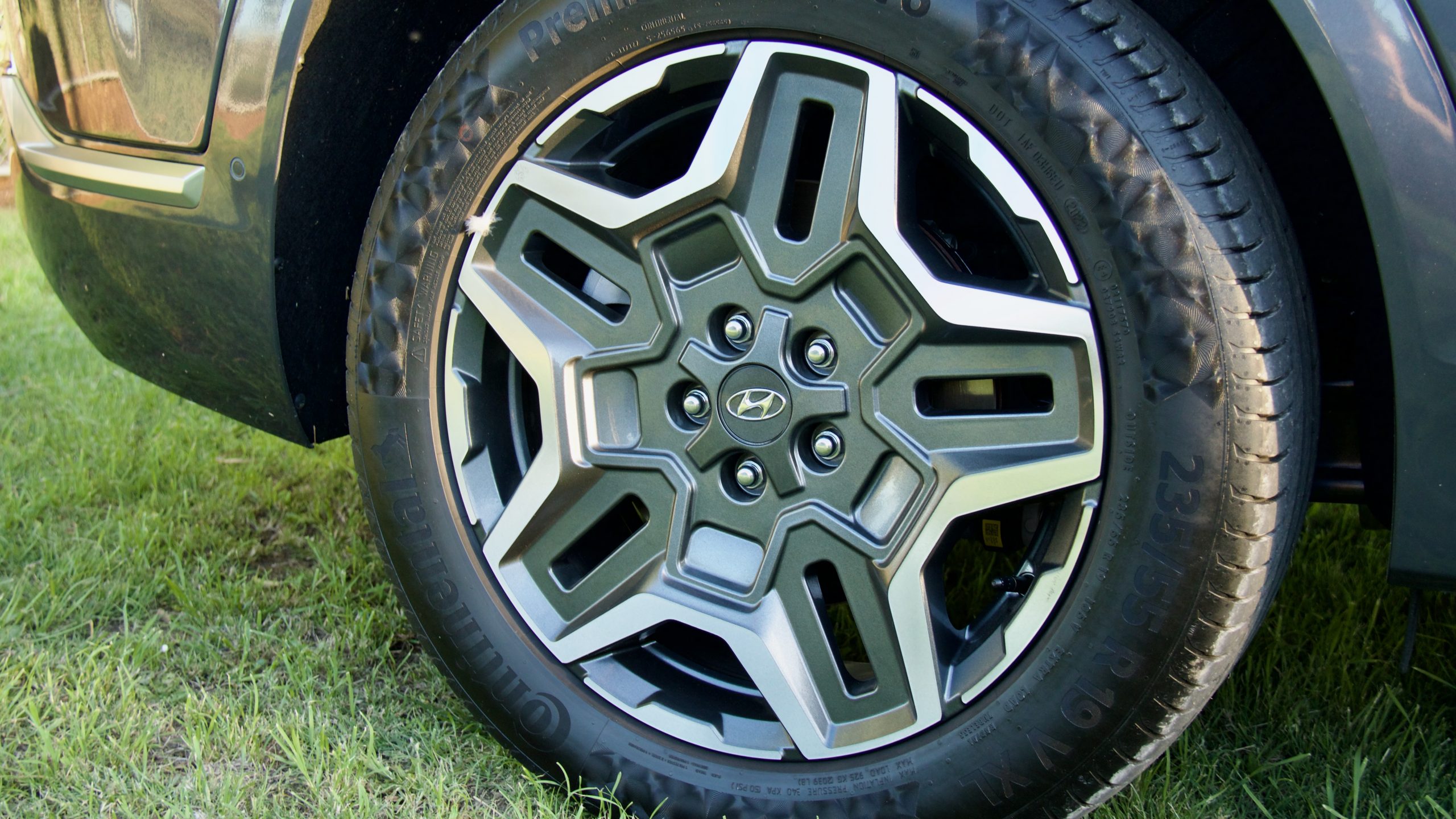
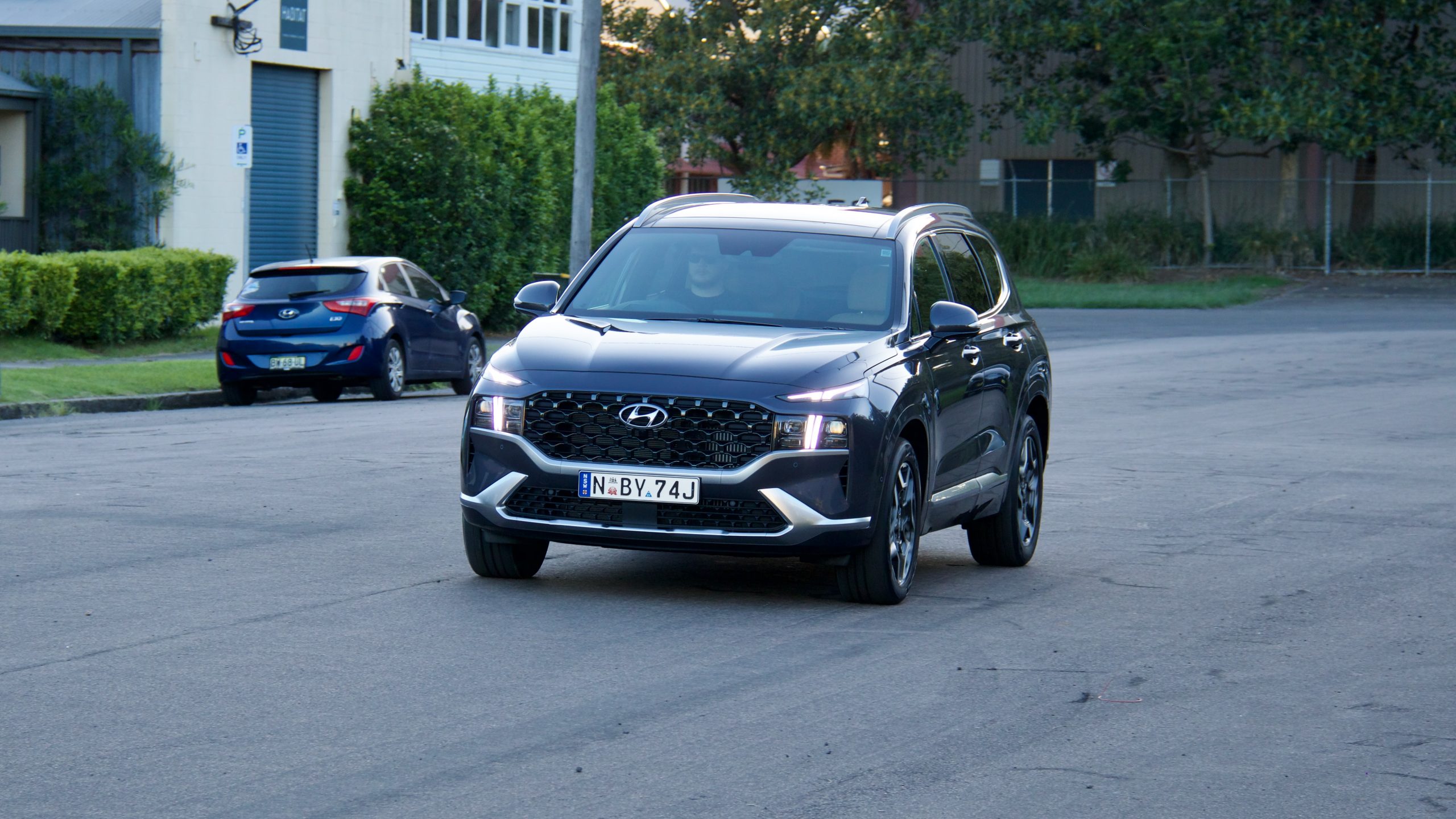
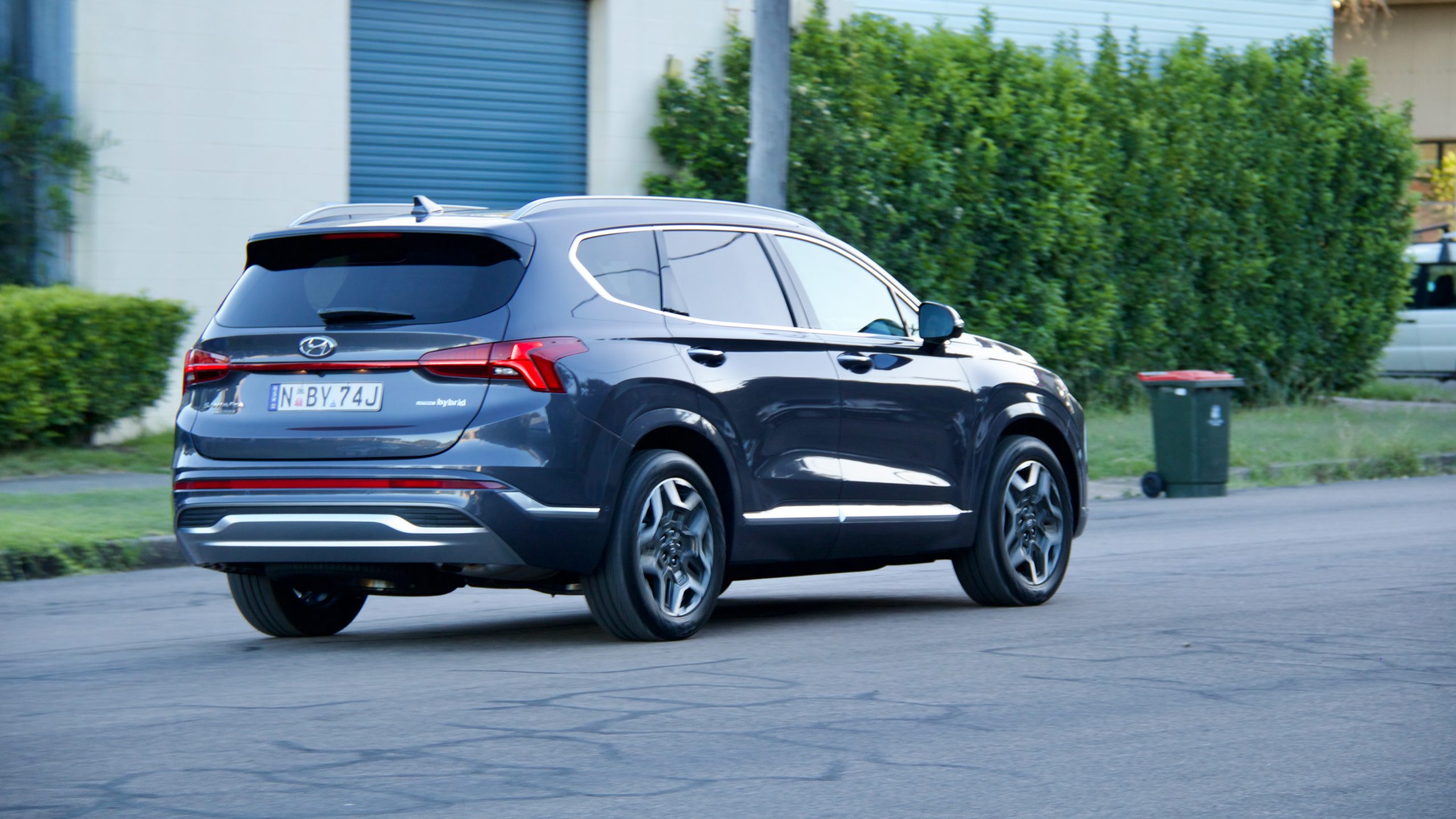
Just because it’s a large hybrid SUV doesn’t mean it doesn’t handle either – it’s no sports car but it still offers a reasonable amount of fun from behind the wheel. It’s also quite well insulated, with little road noise, even at highway speeds. We also love Hyundai’s well tuned active safety systems, which even automatically braked for a kangaroo at night – though we definitely wouldn’t rely on that.
Interior & Practicality: 9.5/10
As we’ve seen with other Santa Fe models, the interior of the 2023 Hyundai Santa Fe Highlander Hybrid is mostly excellent. It’s attractive to look at, nice to touch, easy to use and very comfortable as well – plus, the new six-seat layout that’s optionally available on the hybrid adds a touch of luxury as well. The Santa Fe’s cabin feels a touch more special than both the Sorento and Kluger thanks to its mix of great quality and technology.
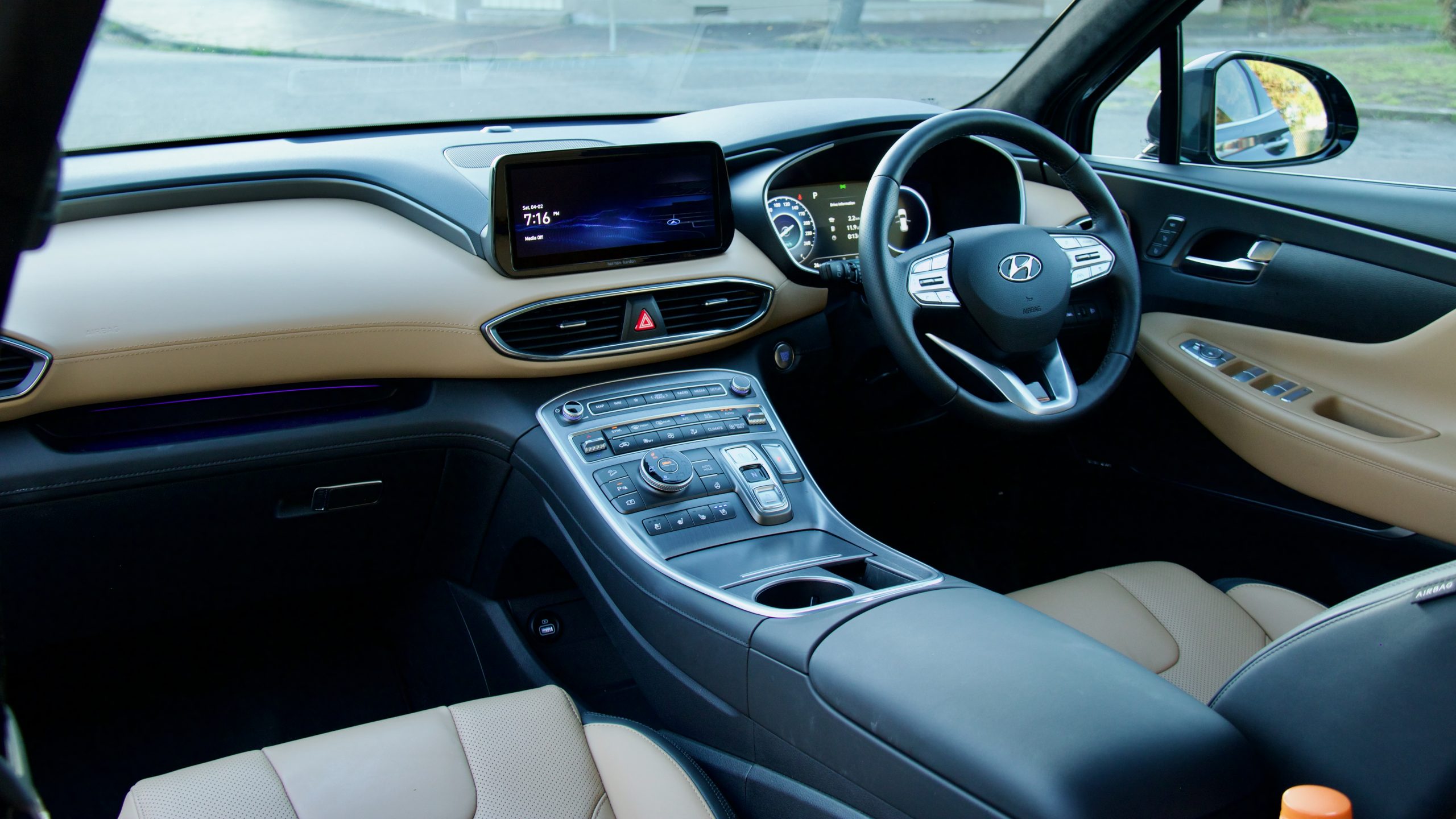
The quality inside the Santa Fe is excellent, with lots of soft touch materials and lovely soft leathers used through the cabin. We particularly like the Nappa leather used on the seats, with feels tight and great quality – plus, the optional tan colour really makes the cabin pop with just the right amount of colour. It’s also quite a practical cabin as well, with large door bins, a large glovebox, a huge centre bin underneath the arm rest, a big tray underneath the centre console and decent cup holders as well.
Centre of the Santa Fe’s interior is a 10.25-inch touchscreen with wired Apple CarPlay and Android Auto, satellite navigation with live traffic and digital radio – plus a punchy 10-speaker Harman Kardon sound system as well. The touchscreen software is used in most other current Hyundai products and it’s great – the layout is easy to use, the screen is high quality and it’s quick to respond to touch inputs. The 12.3-inch digital driver’s display looks good too, though we wish it was more customisable.
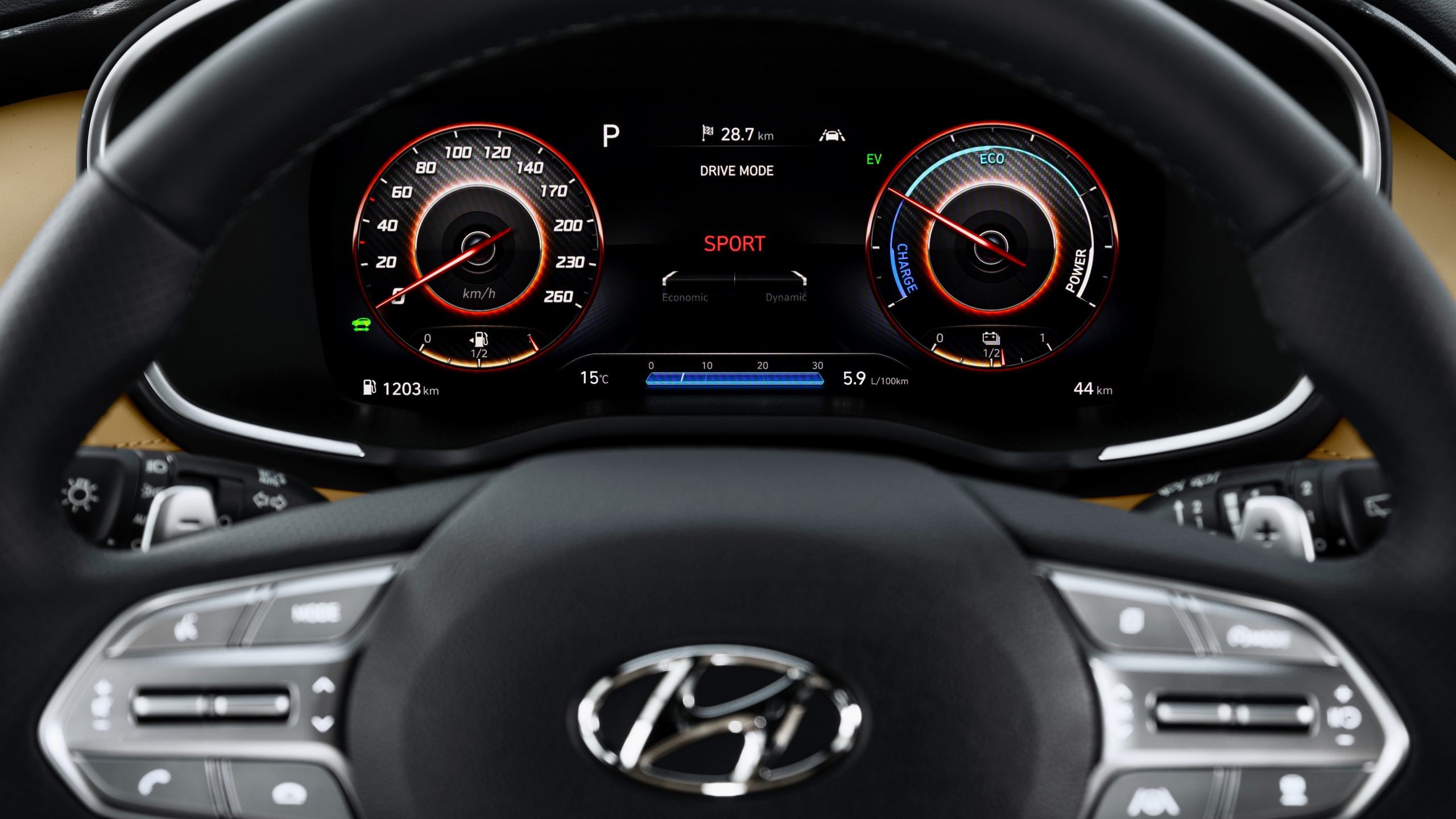
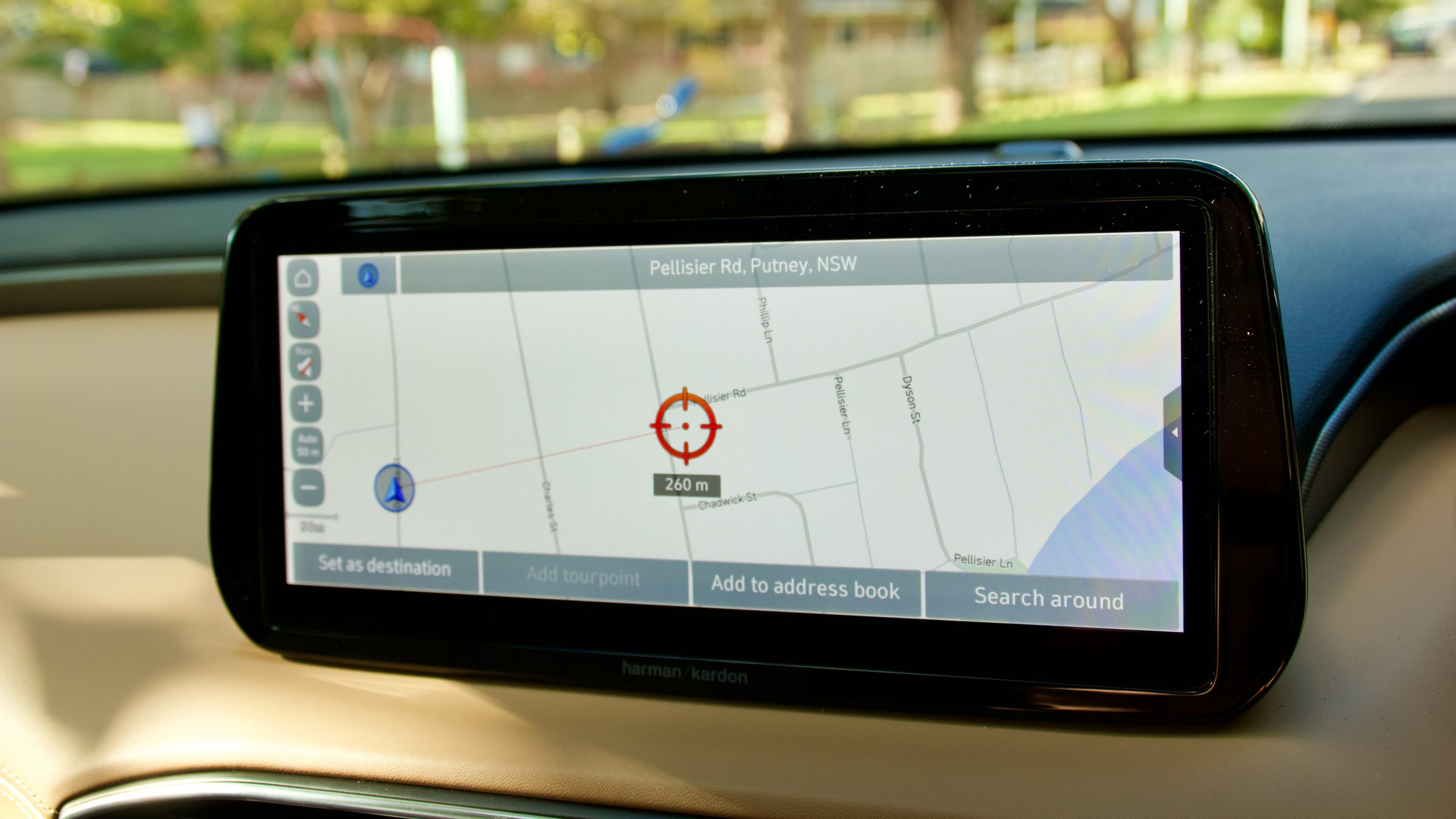
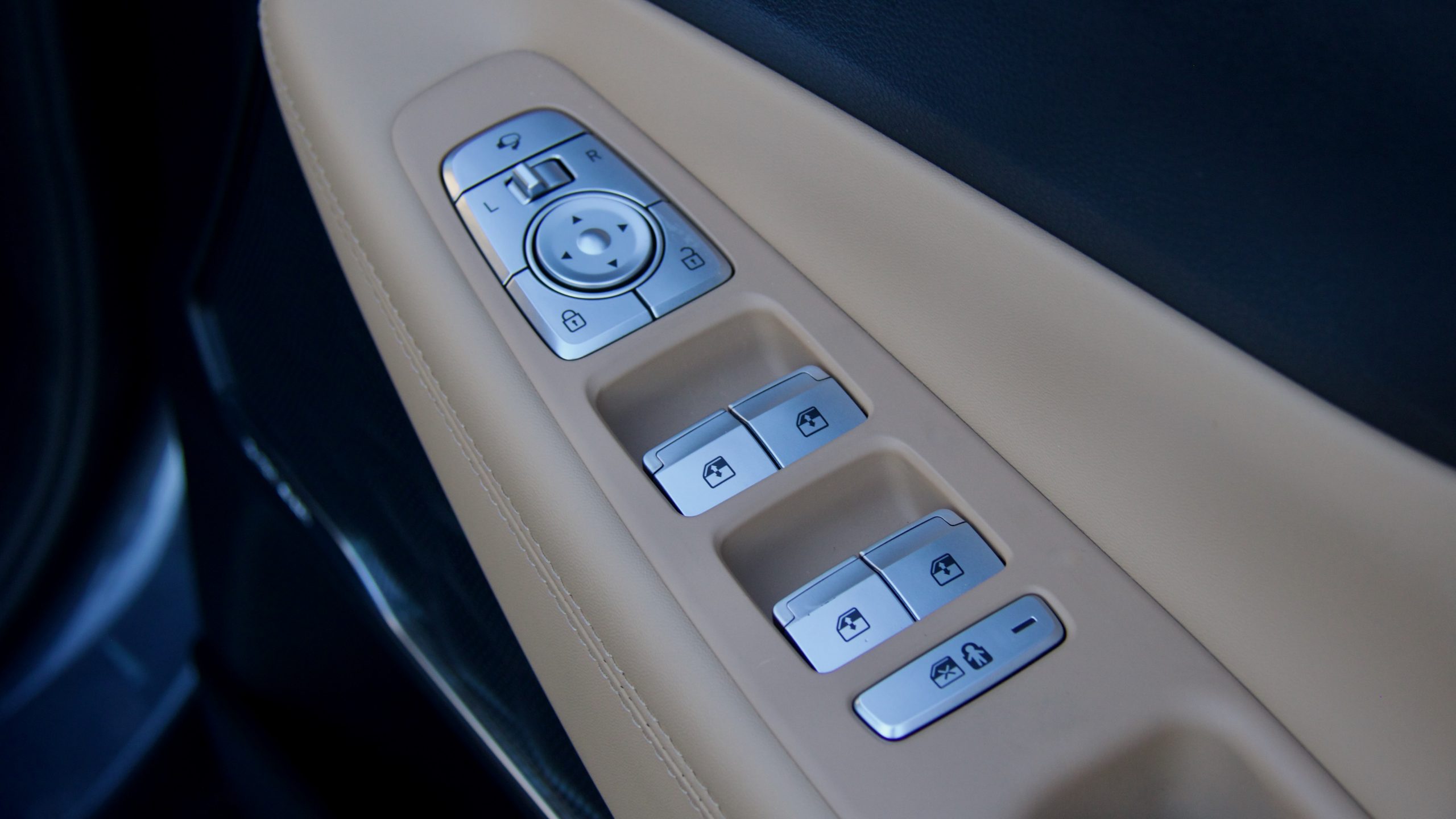
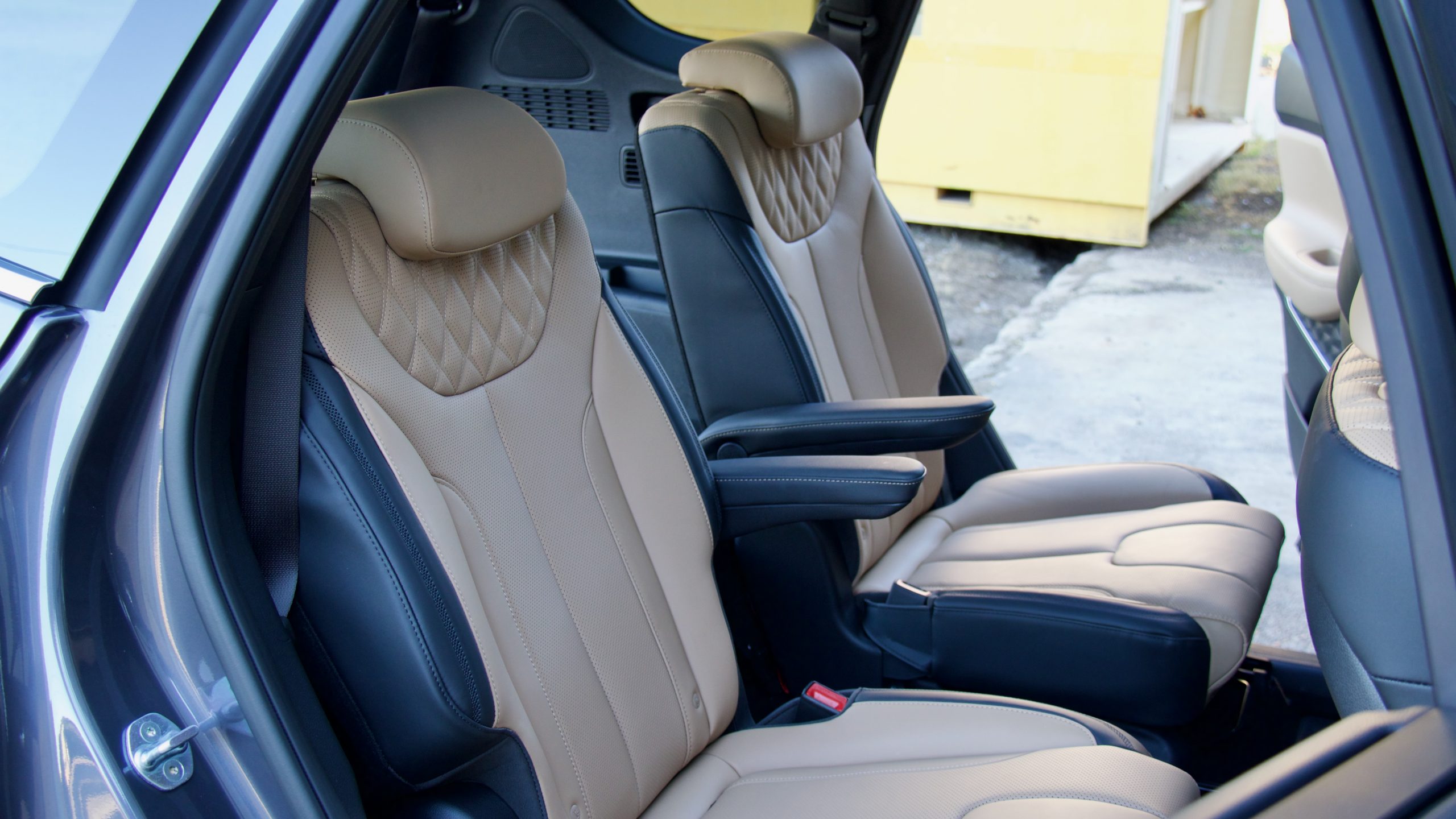
The middle row of any current generation Santa Fe is roomy and comfortable, but the Highlander Hybrid with the six-seat option takes that further with its captain’s chairs. Instead of a three-seat bench, there are two individual seats – which we’ve seen from Mazda in both the CX-9 and CX-8 before – that slide fore and aft, recline and are even heated as well. There’s the usual good leg- and headroom but with an added airy feeling thanks to the lack of middle seat, which also makes getting into the third row far easier than the seven-seat model. The second row also has air vents, sunshades and two USB-A ports. Both seats also have ISOFIX and tether child seat points.
The third row of the Santa Fe Hybrid is unchanged compared with the regular model, with enough space for kids but that’s about it with limited headroom in particular. There are air vents, a USB port and a fan speed controller, but no airbag coverage.
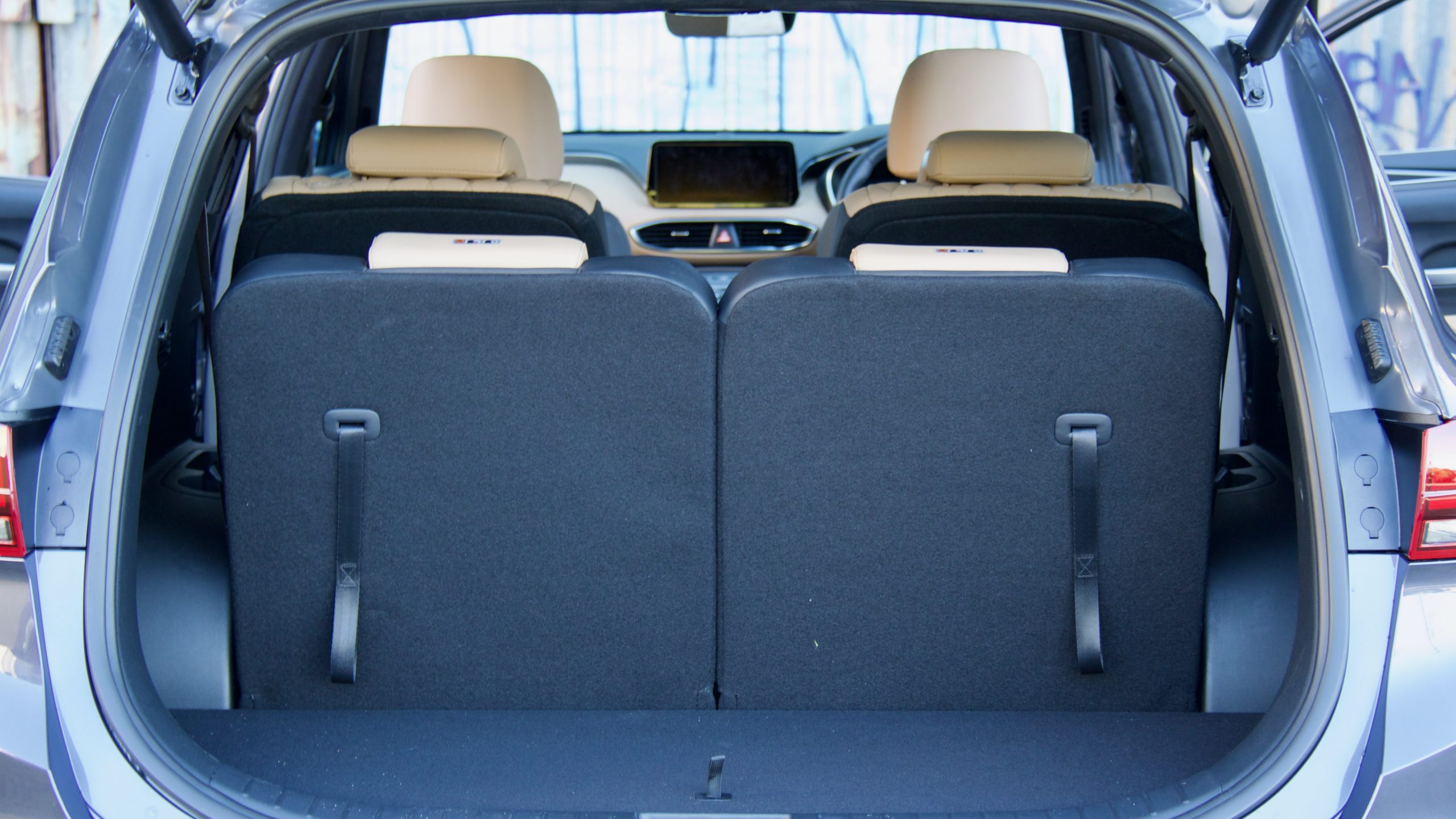
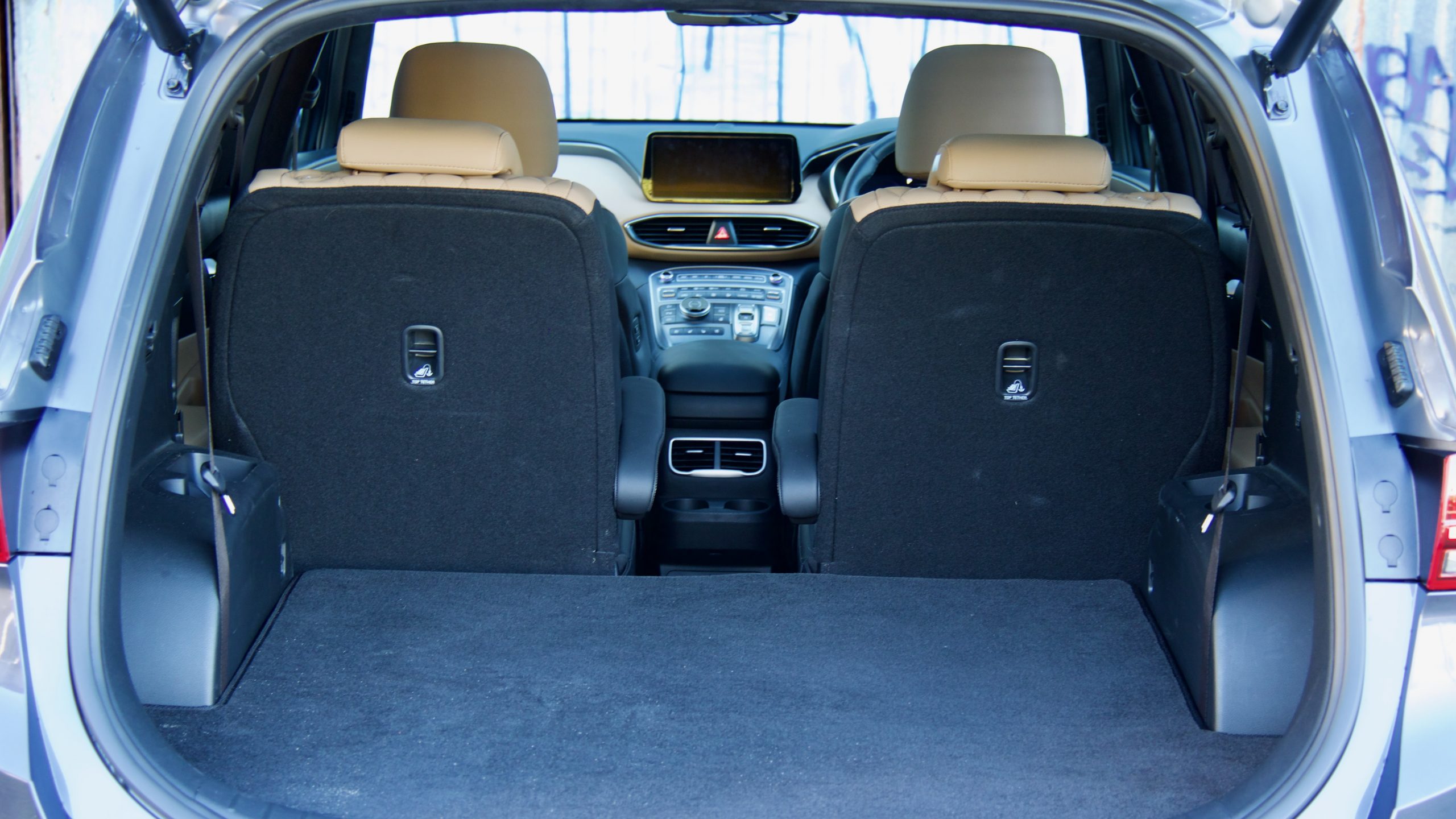
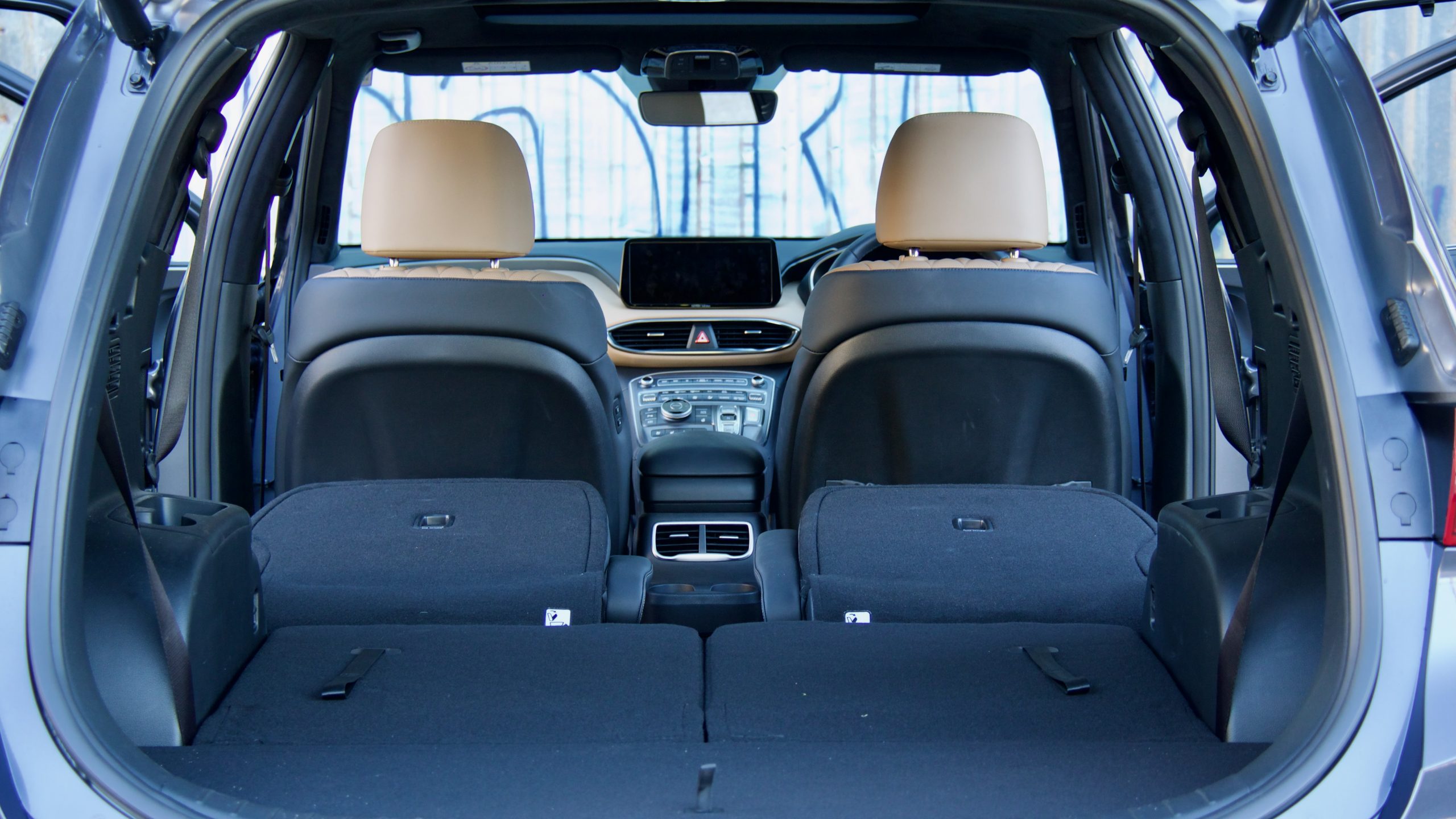
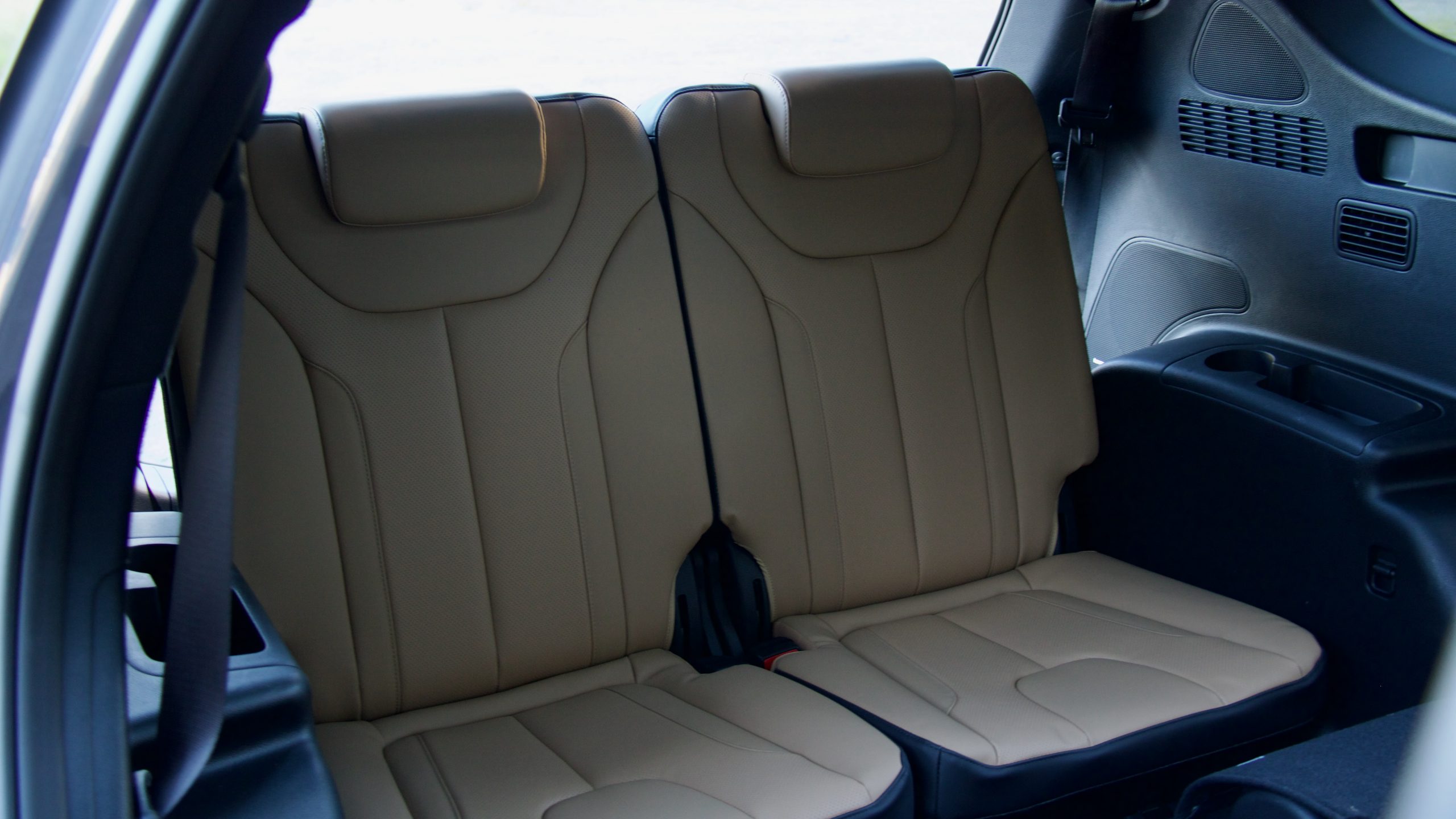
The boot of the Santa Fe with the third row erect measures 130-litres and folding them increases that to 571L. Folding the second row down increases this space dramatically, although Hyundai do not say how big this space is – we’d say around 2,000L in total. The boot itself features under-floor storage for the cargo cover, buttons to fold the middle row of seats and is nicely finished too.
Service & Warranty: 8/10
Like other new Hyundai products, the 2023 Hyundai Santa Fe Highlander Hybrid comes with a five-year/unlimited km warranty with an eight-year/160,000km warranty for the hybrid battery. It also comes with a year of roadside assistance that’s topped up as long as you service at a Hyundai dealership. The Santa Fe’s service intervals are once-yearly/every 10,000kmm and five years/75,000km of servicing costs $2,295 ($459 per service).
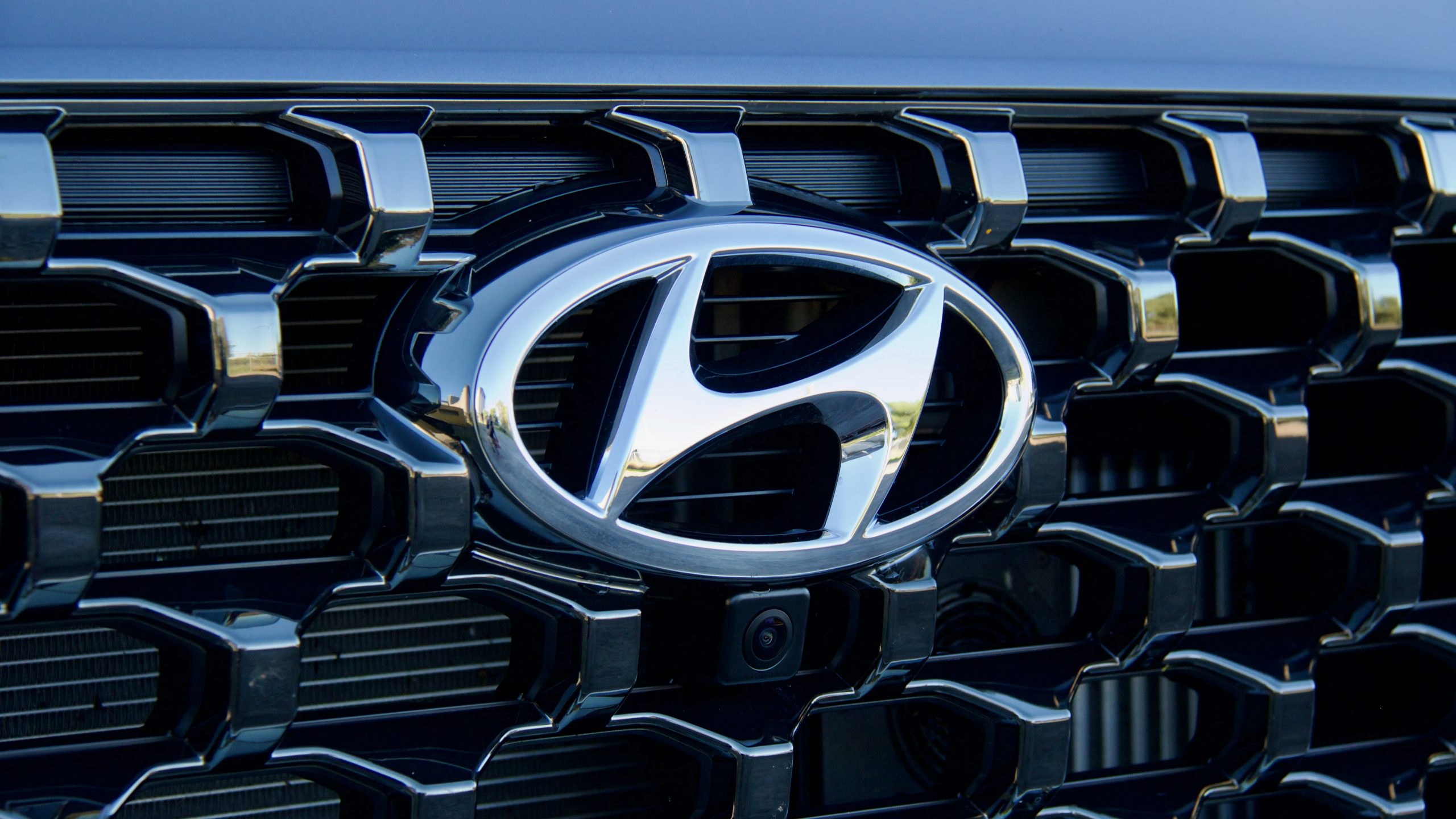
Toyota offers the same five-year/unlimited km car and eight-year/160,000km battery warranties as Hyundai, though servicing at a Toyota dealership will see the mechanical warranty extended to seven years and the hybrid warranty extended to 10 years in total – though there’s no roadside assistance at all. Kia features a seven-year/unlimited km warranty across its new car range, with the same eight year/160,000km battery warranty as Hyundai. Five years/75,000km of servicing costs just $1,325 for the Kluger and five years/50,000km of servicing costs $2,786 ($557 per service).
The 2023 Hyundai Santa Fe Highlander Hybrid DiscoverAuto Rating: 8.7/10
Hyundai has delivered another layer to the excellent Santa Fe lineup with the 2023 Hyundai Santa Fe Highlander Hybrid. It’s launched an in vogue hybrid SUV at a time when motorists are continually facing higher running costs, and one that manages to combine the best parts of the Santa Fe like its comfortable and practical cabin, great driving experience and relative value for money with an efficient and smooth hybrid drivetrain that proves that Toyota isn’t the only company that can make a great hybrid system.
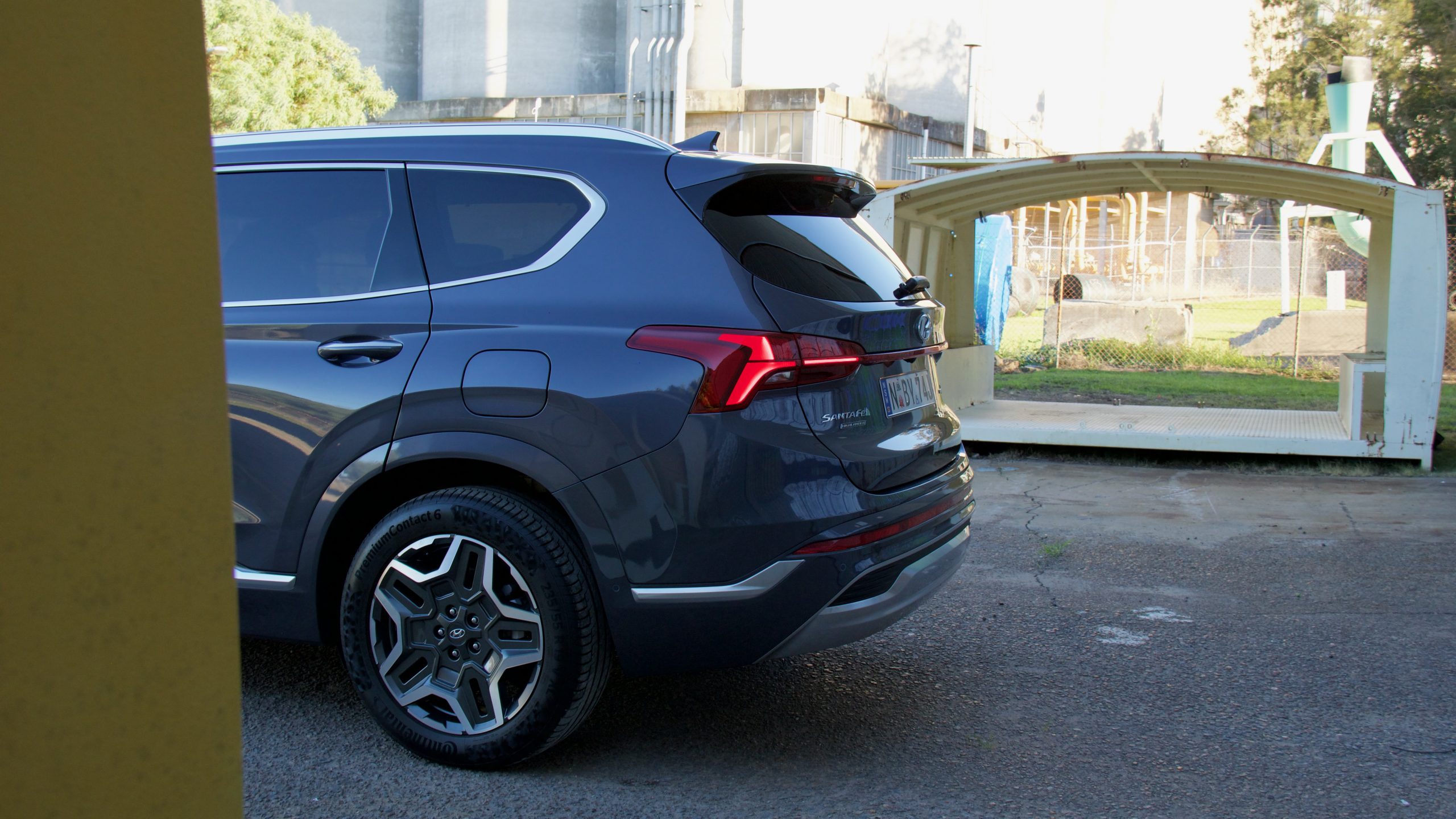
For our money, the extra $3,000 over the diesel is worth the extra spend as we would drive the hybrid mostly in town anyway – though those doing more country driving may not see the extra spend as worthy – and that while it’s not cheap, it’s almost $9,000 less expensive than the Kluger Grande hybrid. We would change very little – we’d add third row airbags coverage and add a sub-$60k hybrid variant for those who don’t need or can’t afford the Elite or Highlander – and if you’re after a hybrid SUV, the Santa Fe is a great option. It always has been, but now it can add hybrid drivetrain to its long list of attributes.
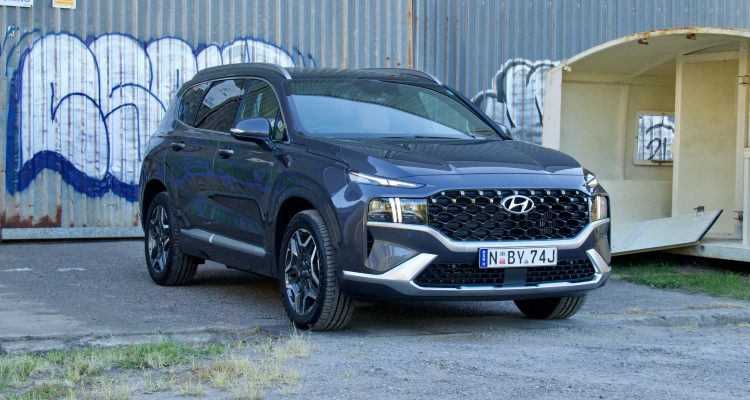
Love the detailed review of the 2023 Hyundai Santa Fe Highlander Hybrid! Your assessment of its fuel efficiency and performance really helped me make an informed decision. Can’t wait to test drive it!